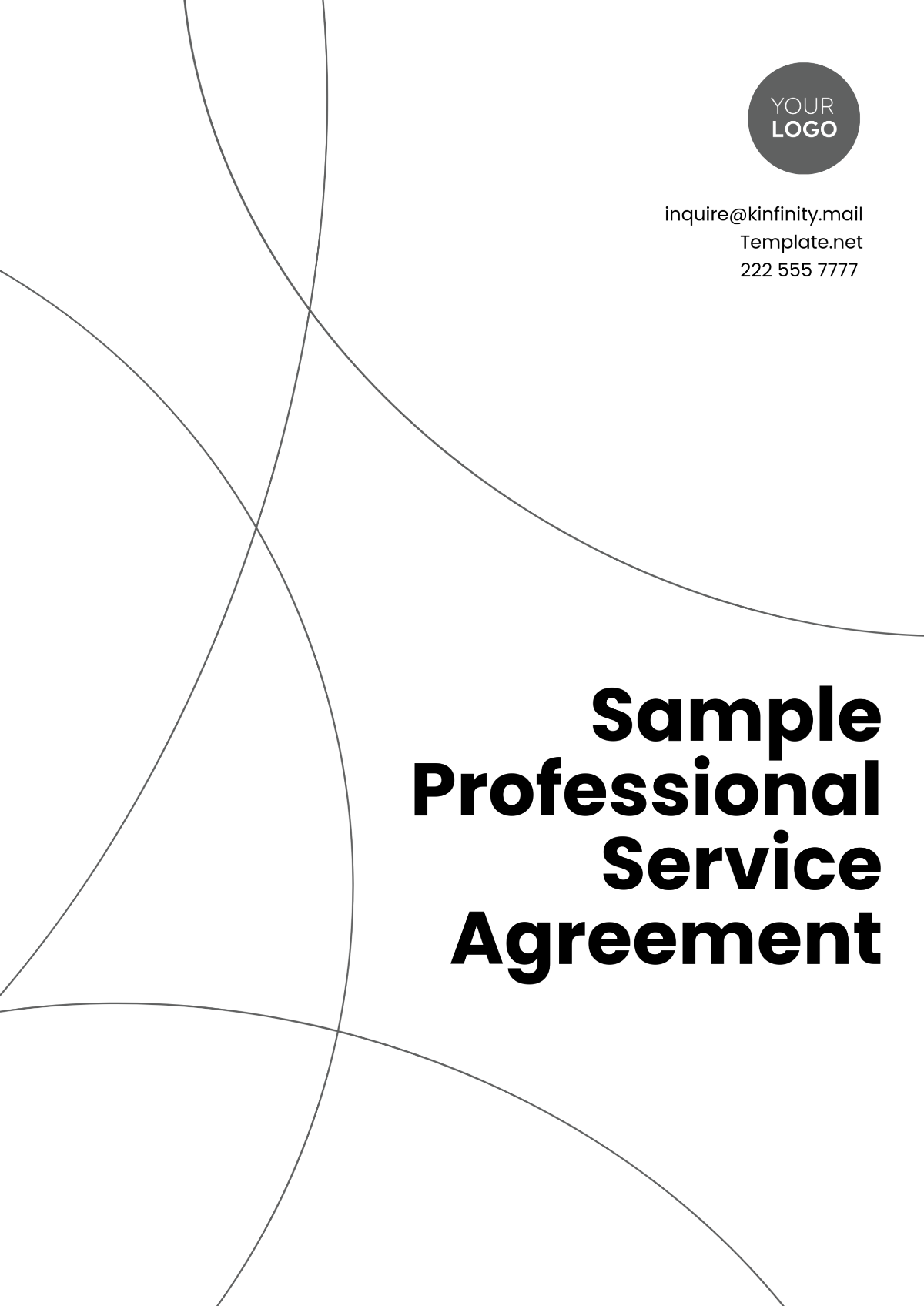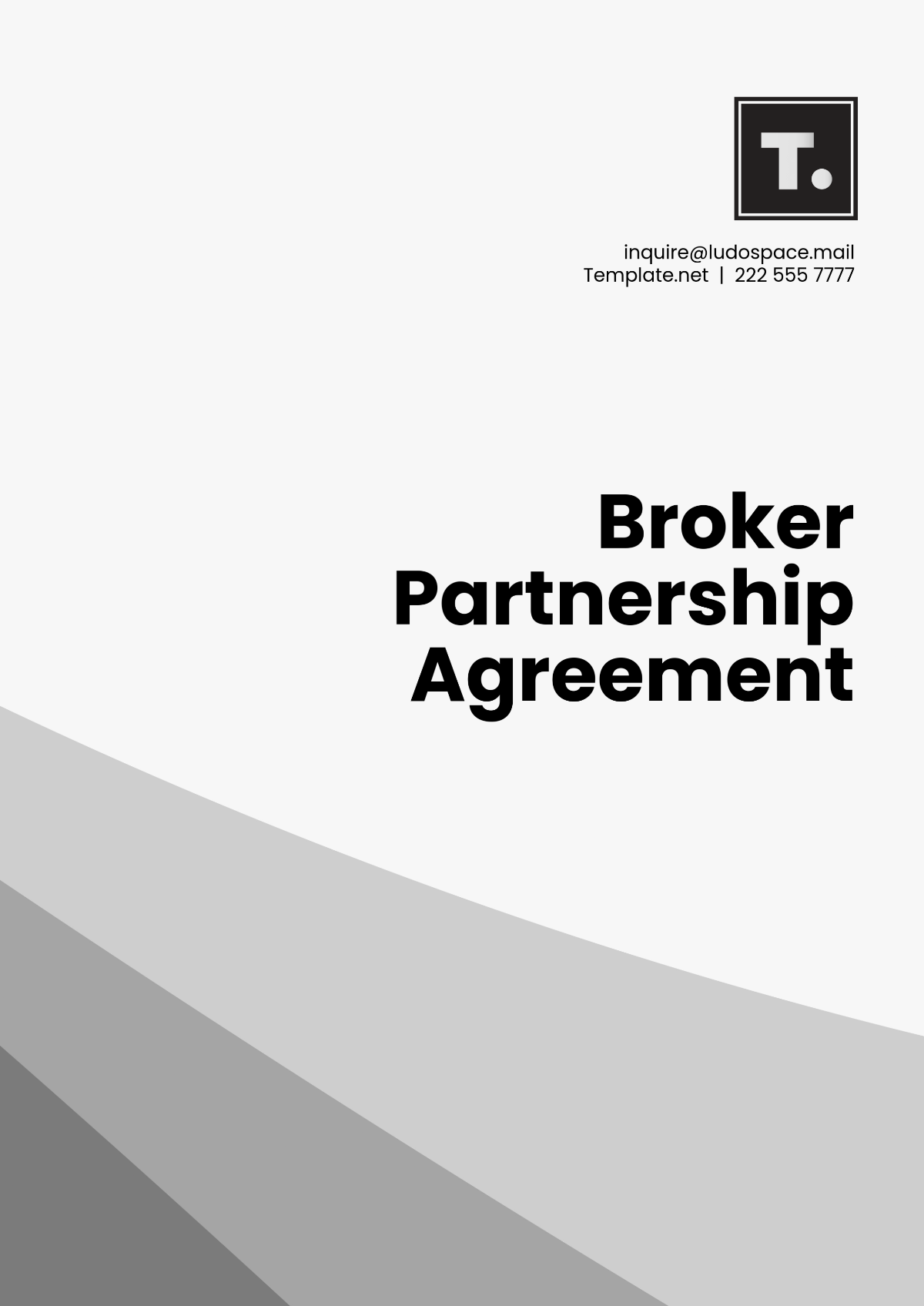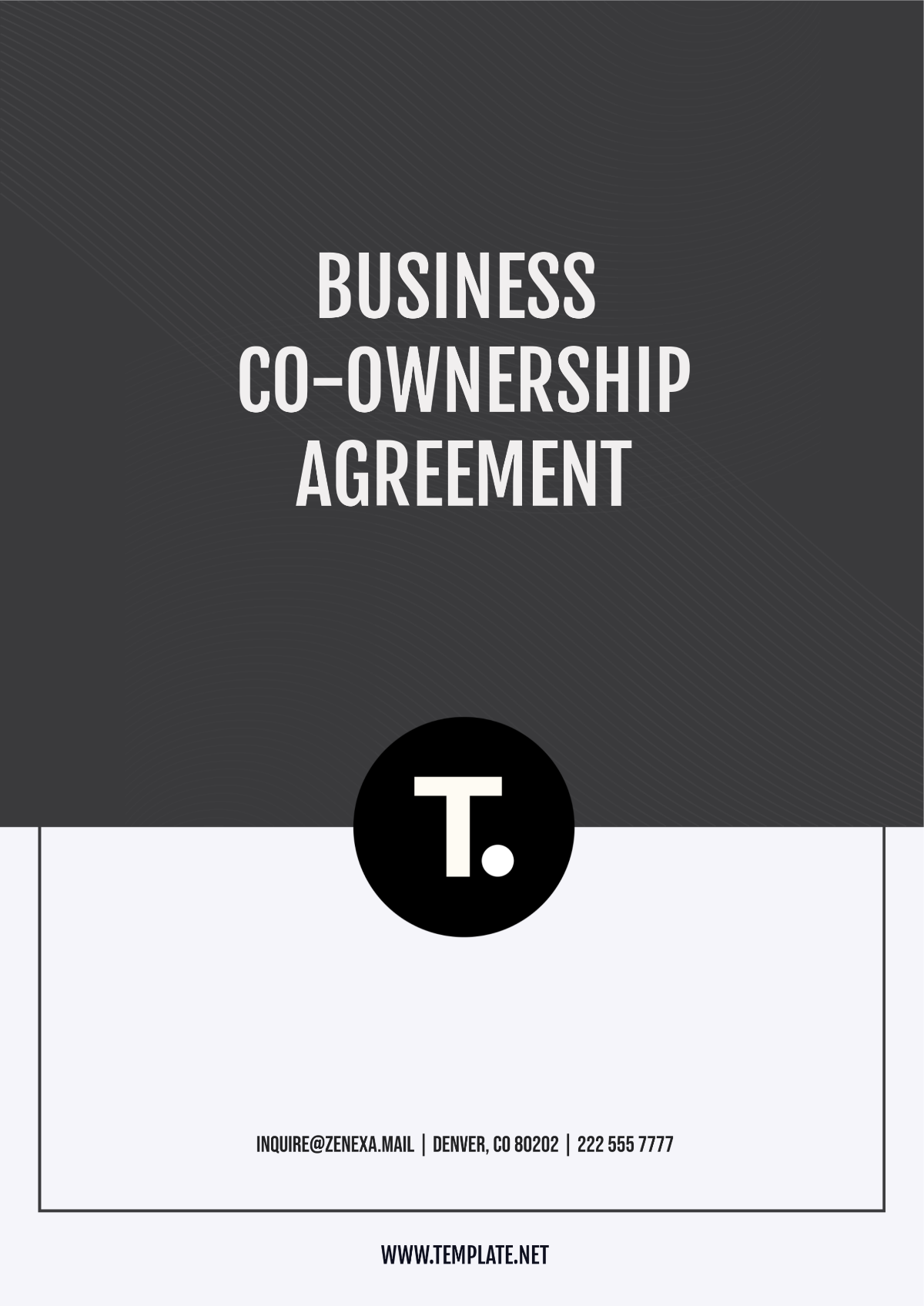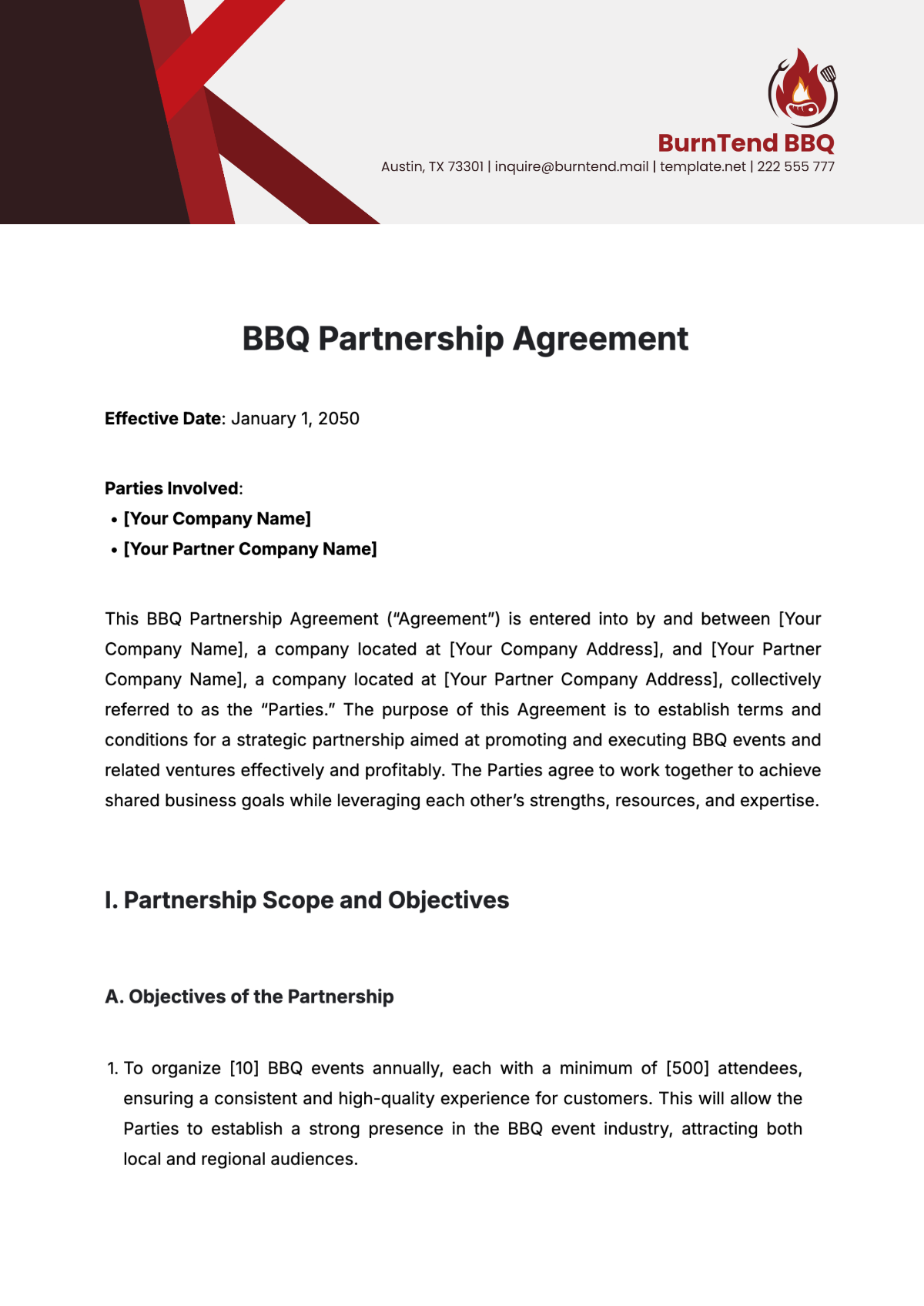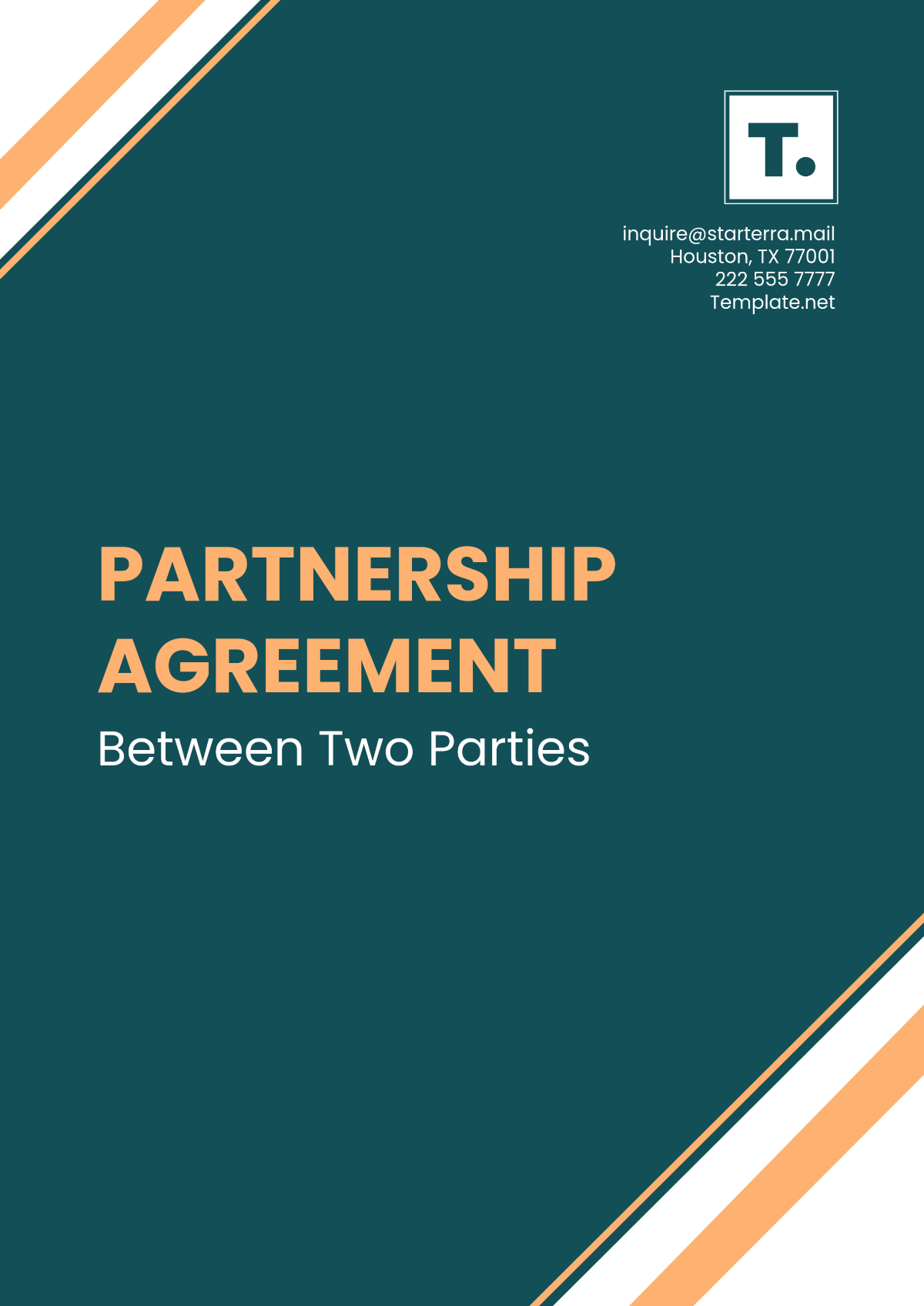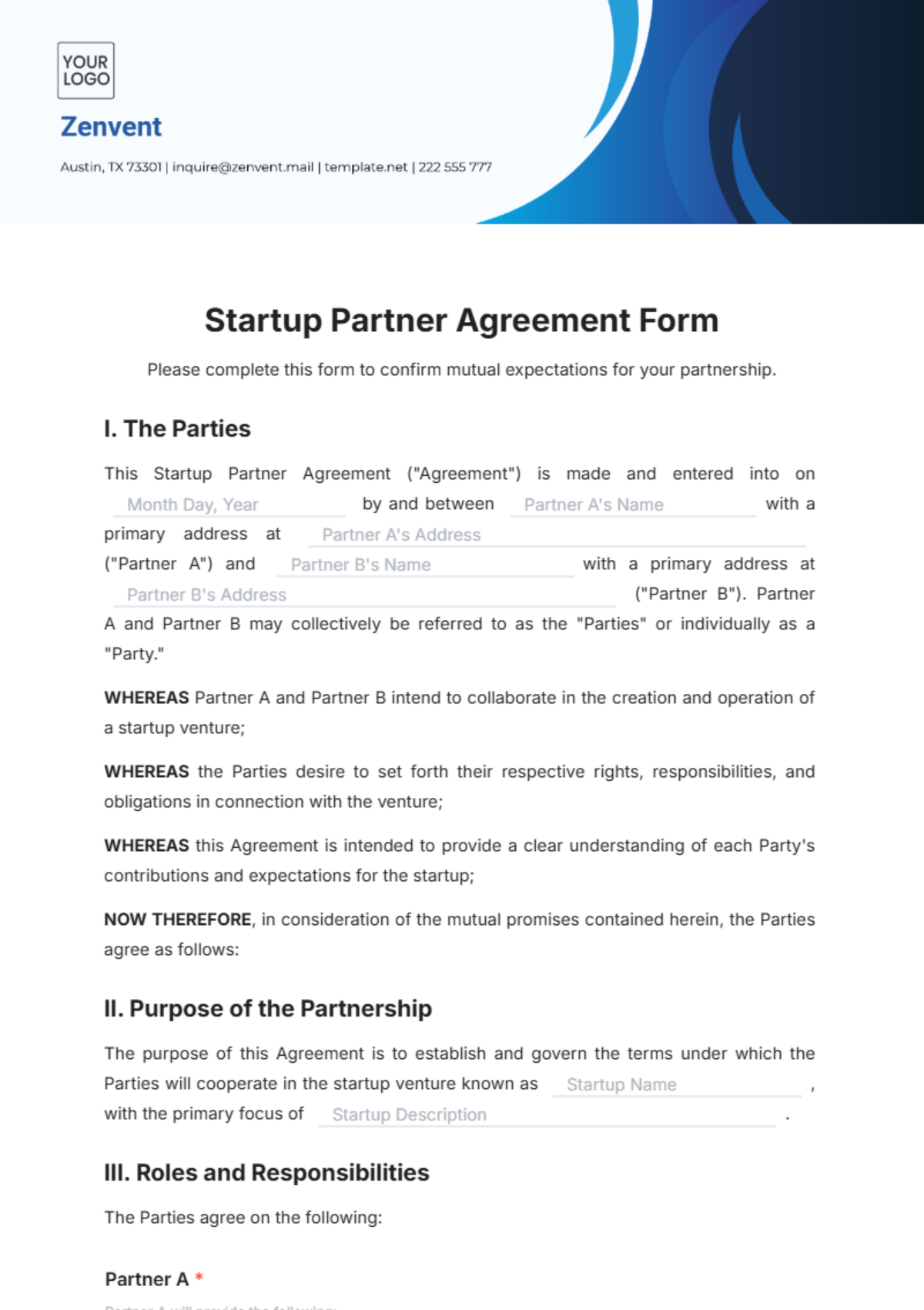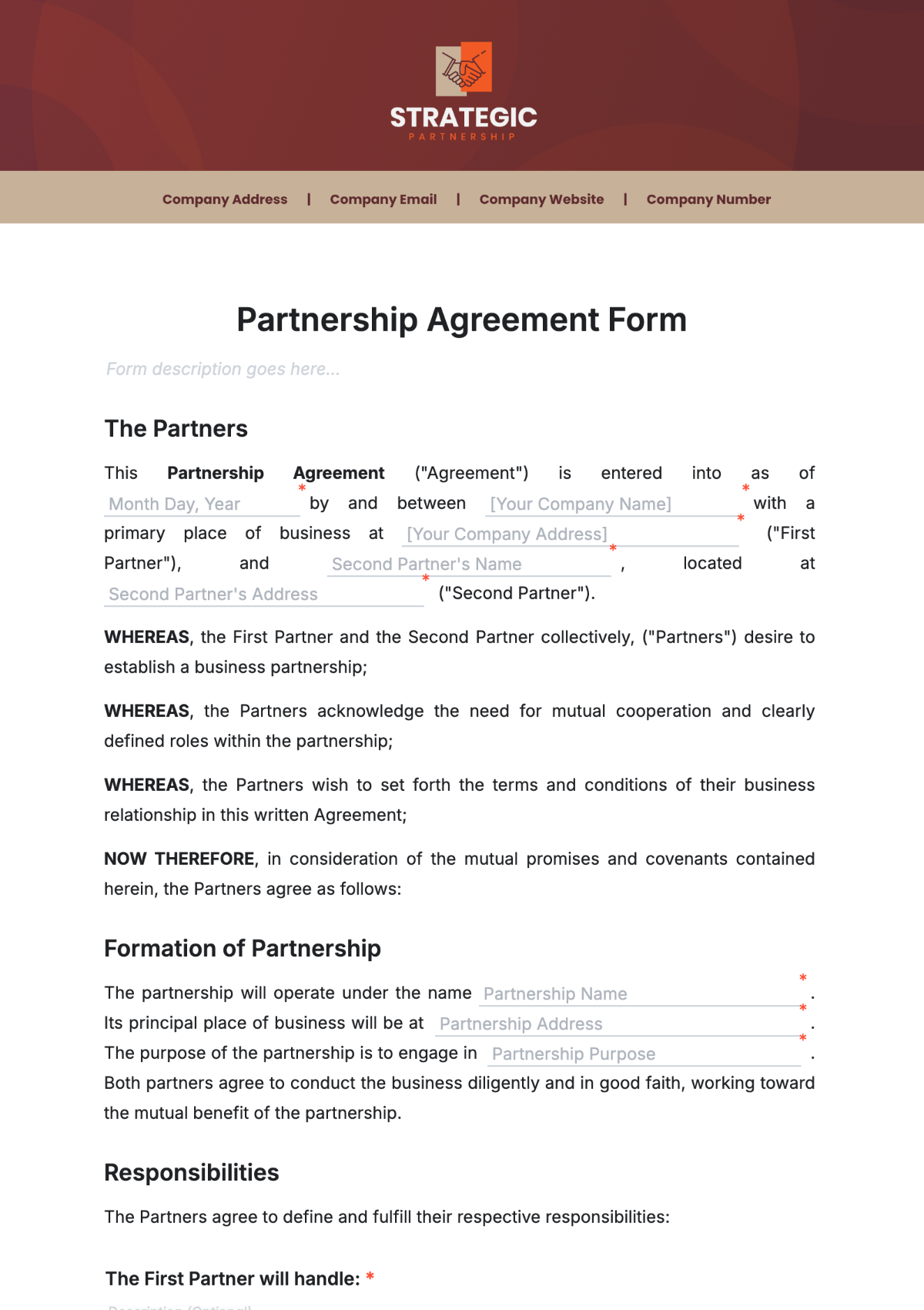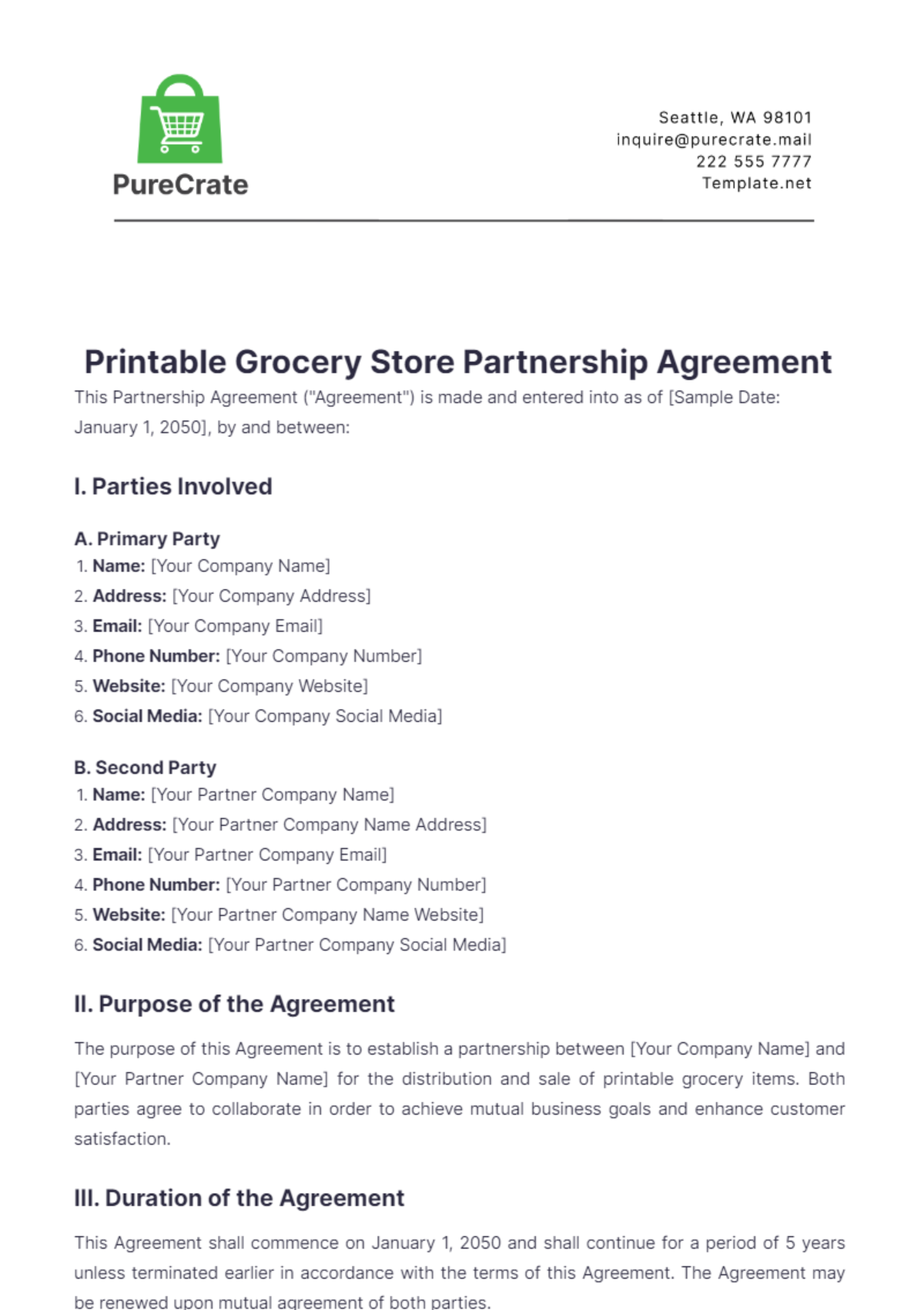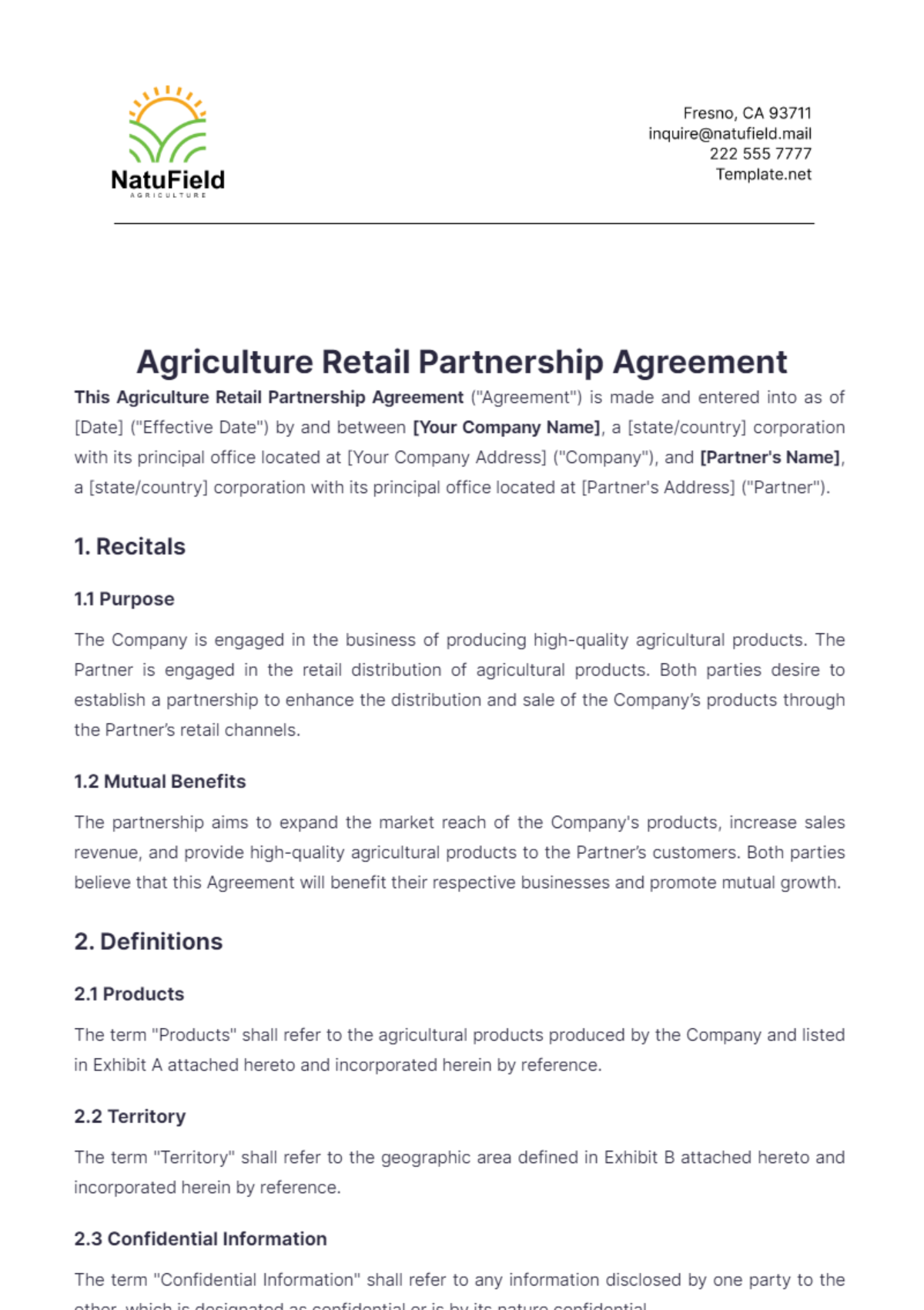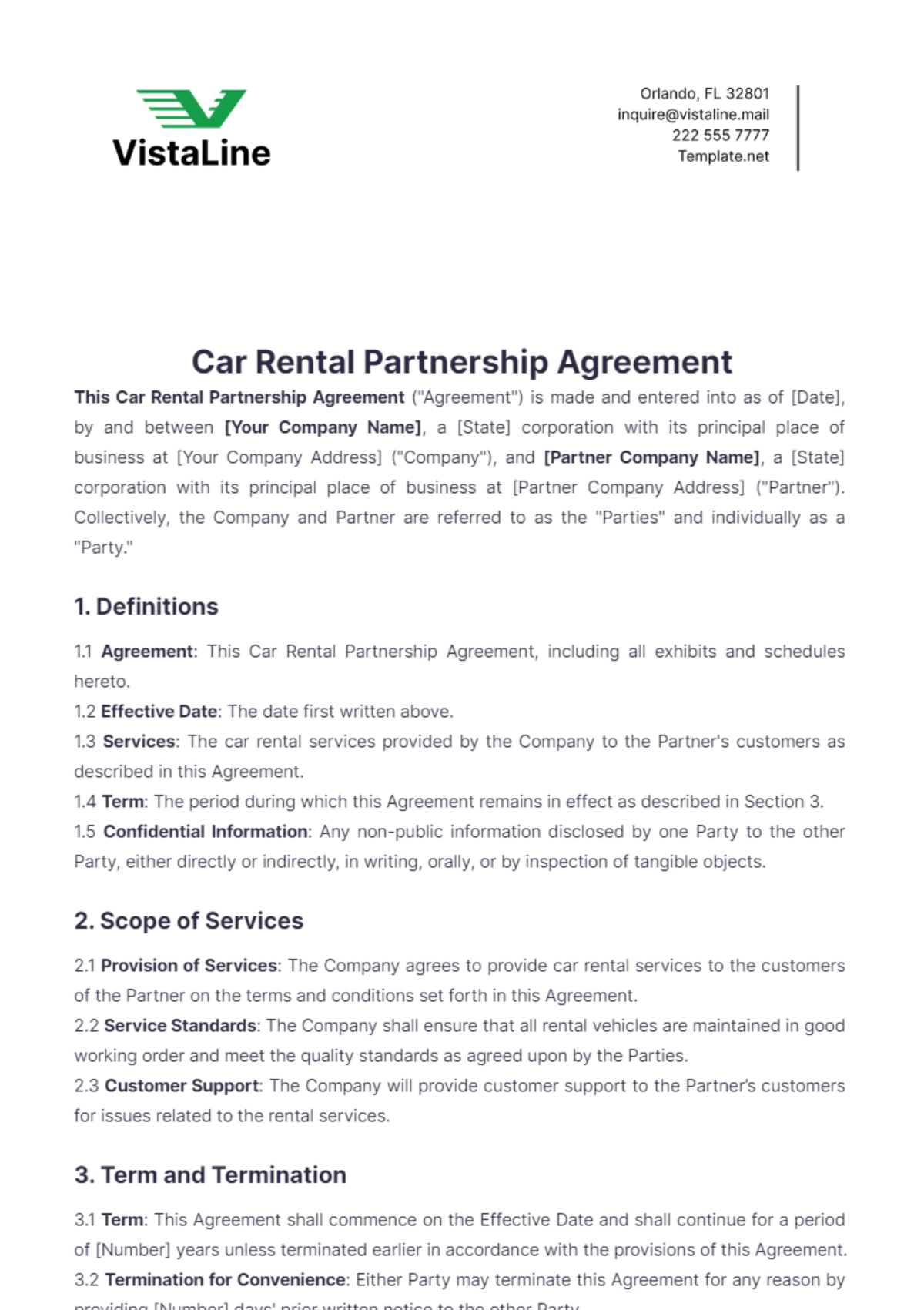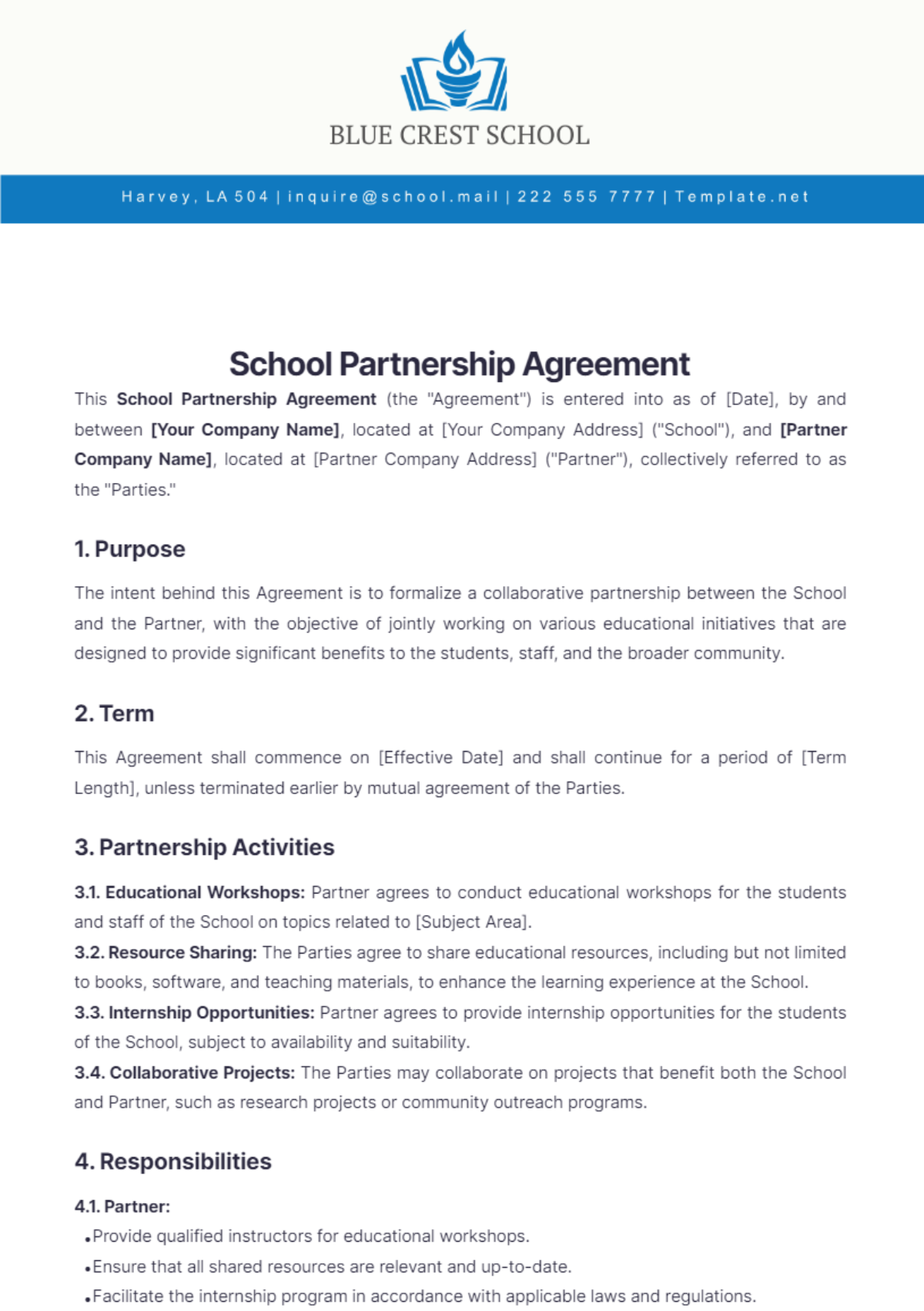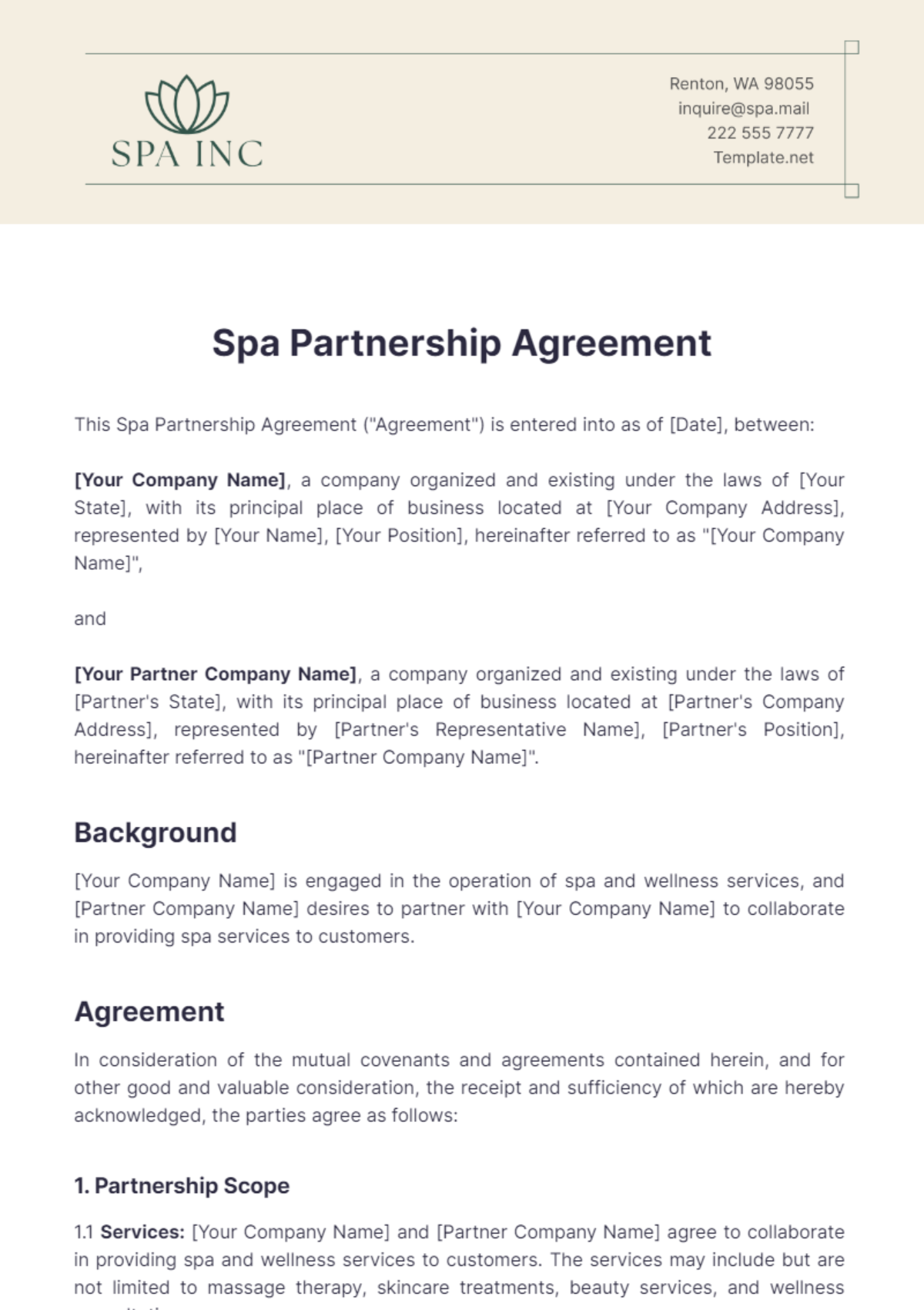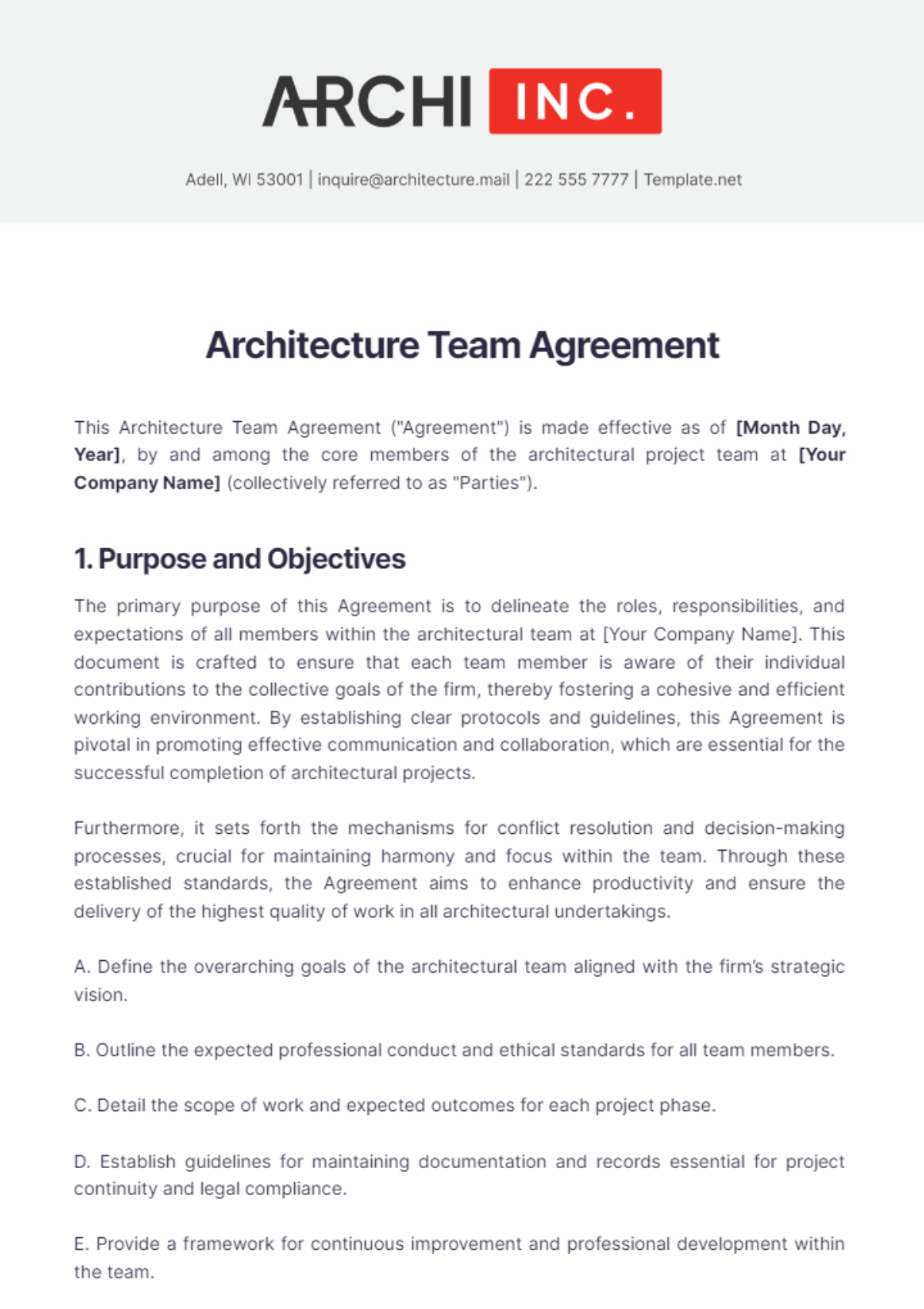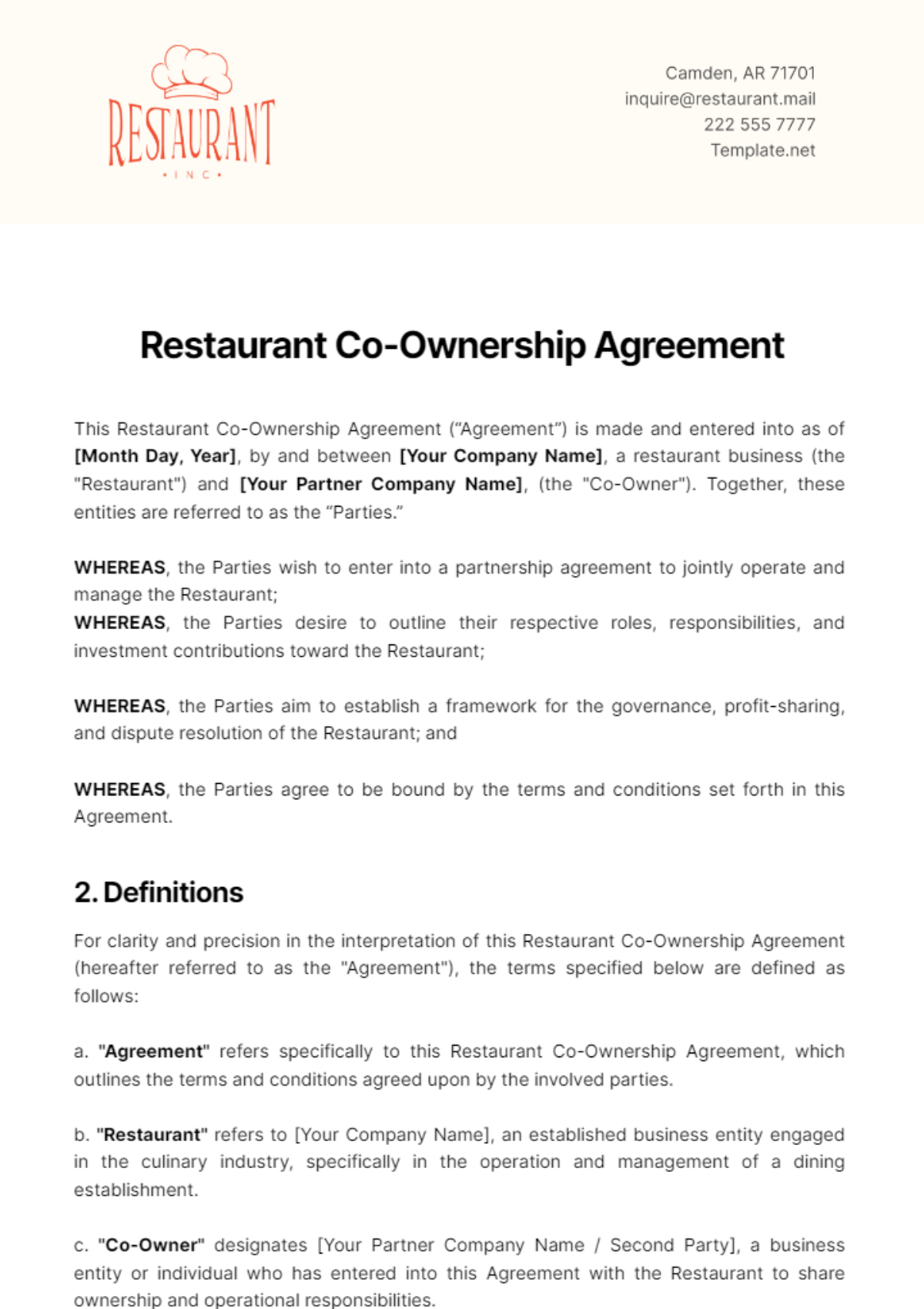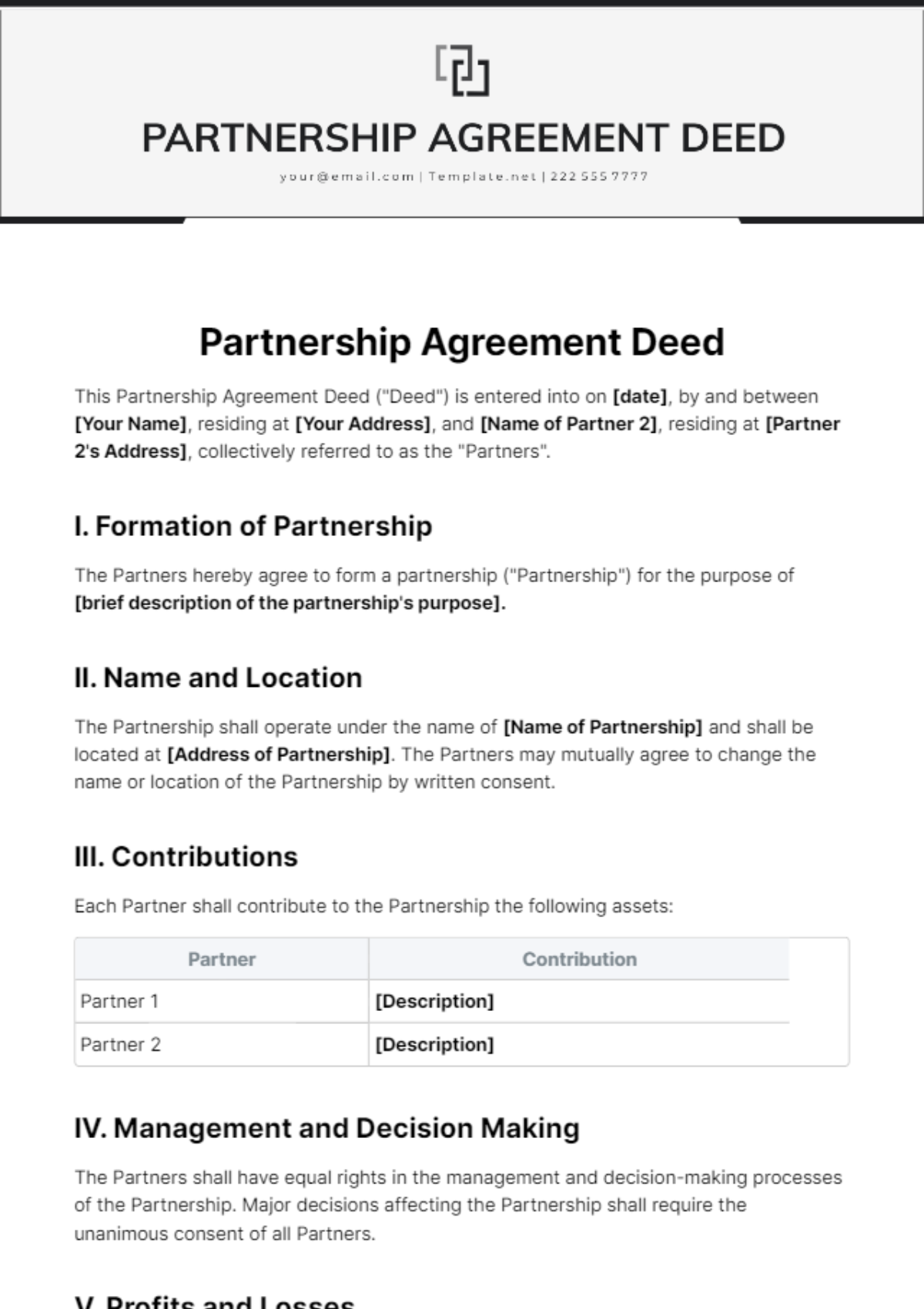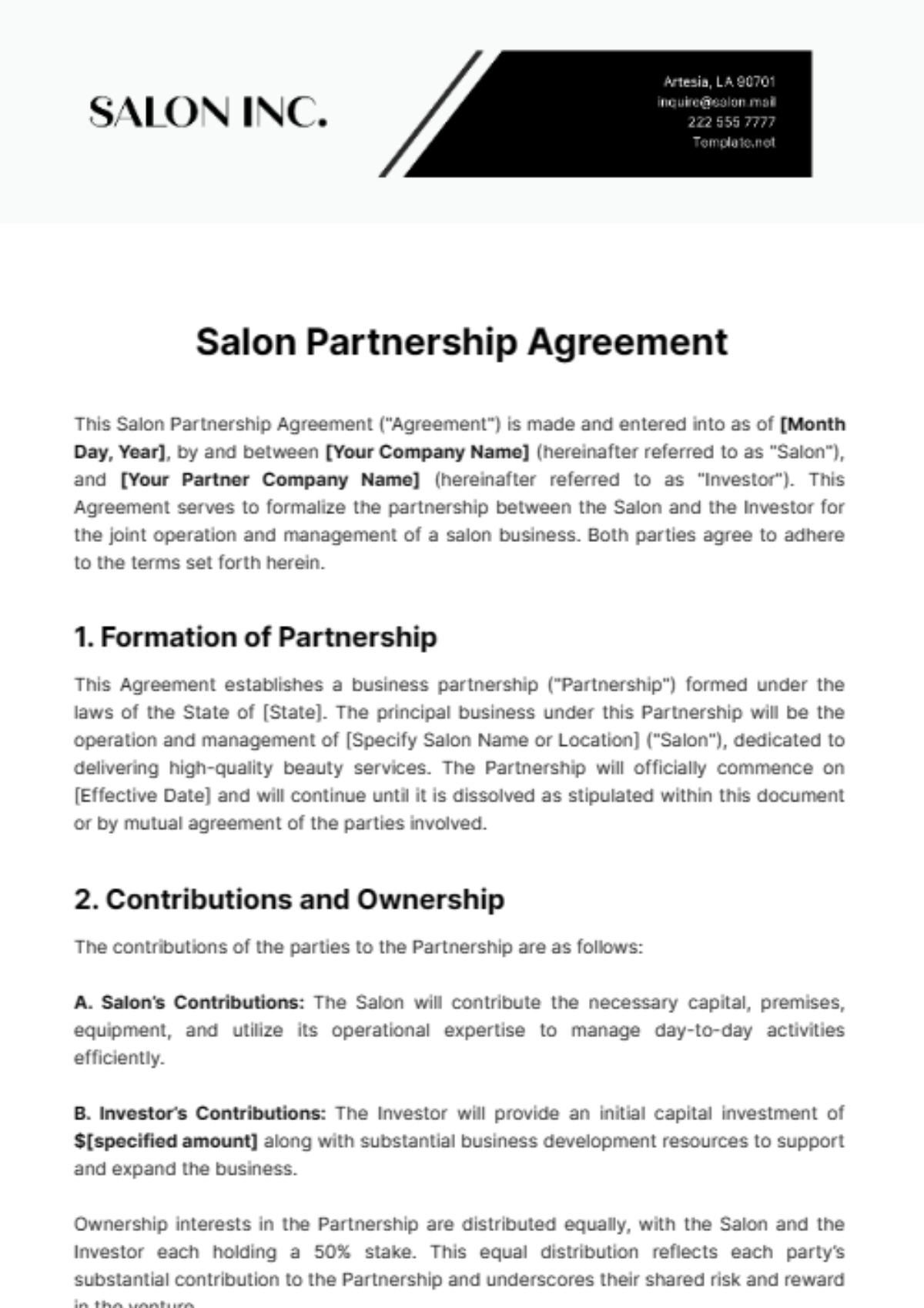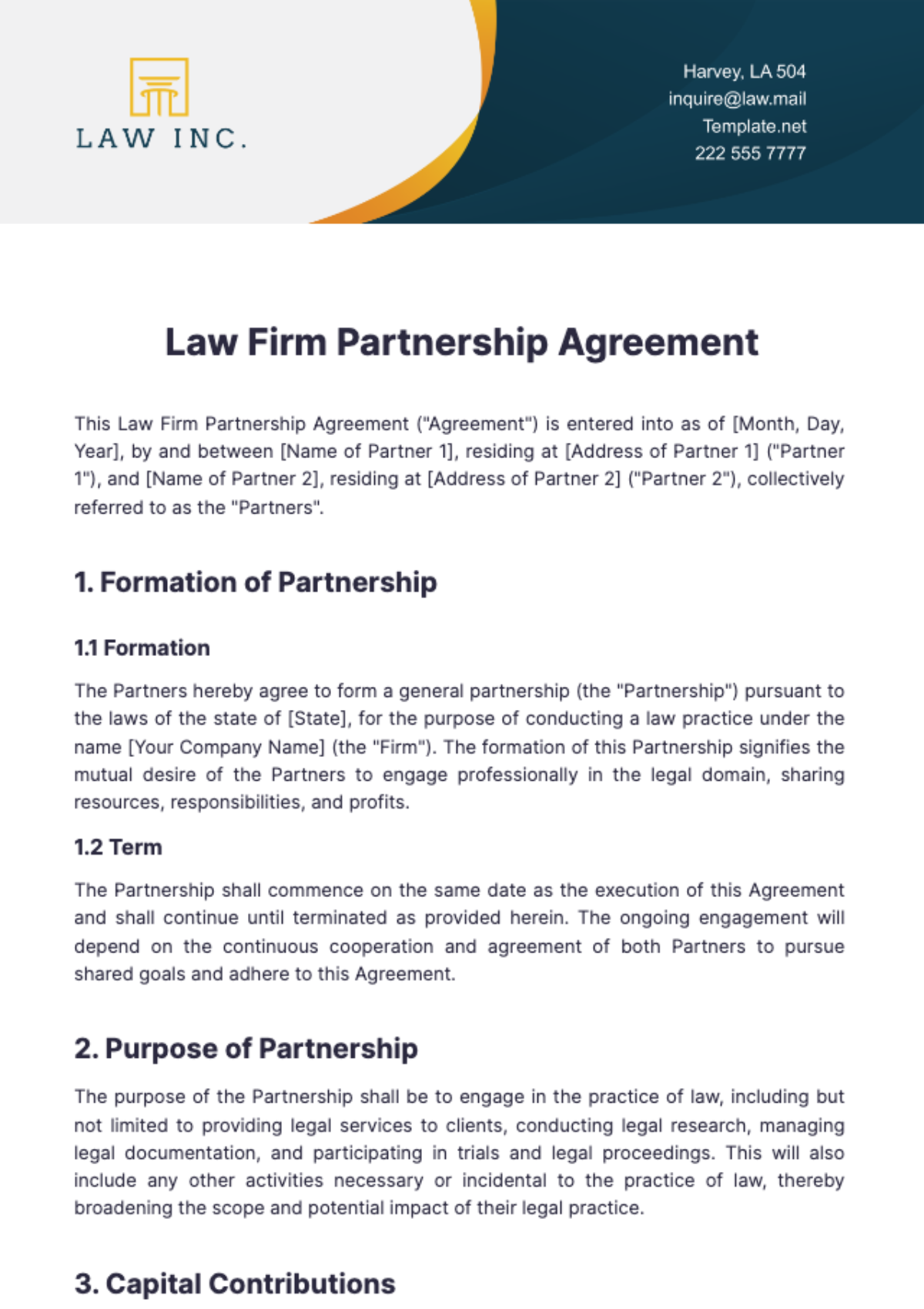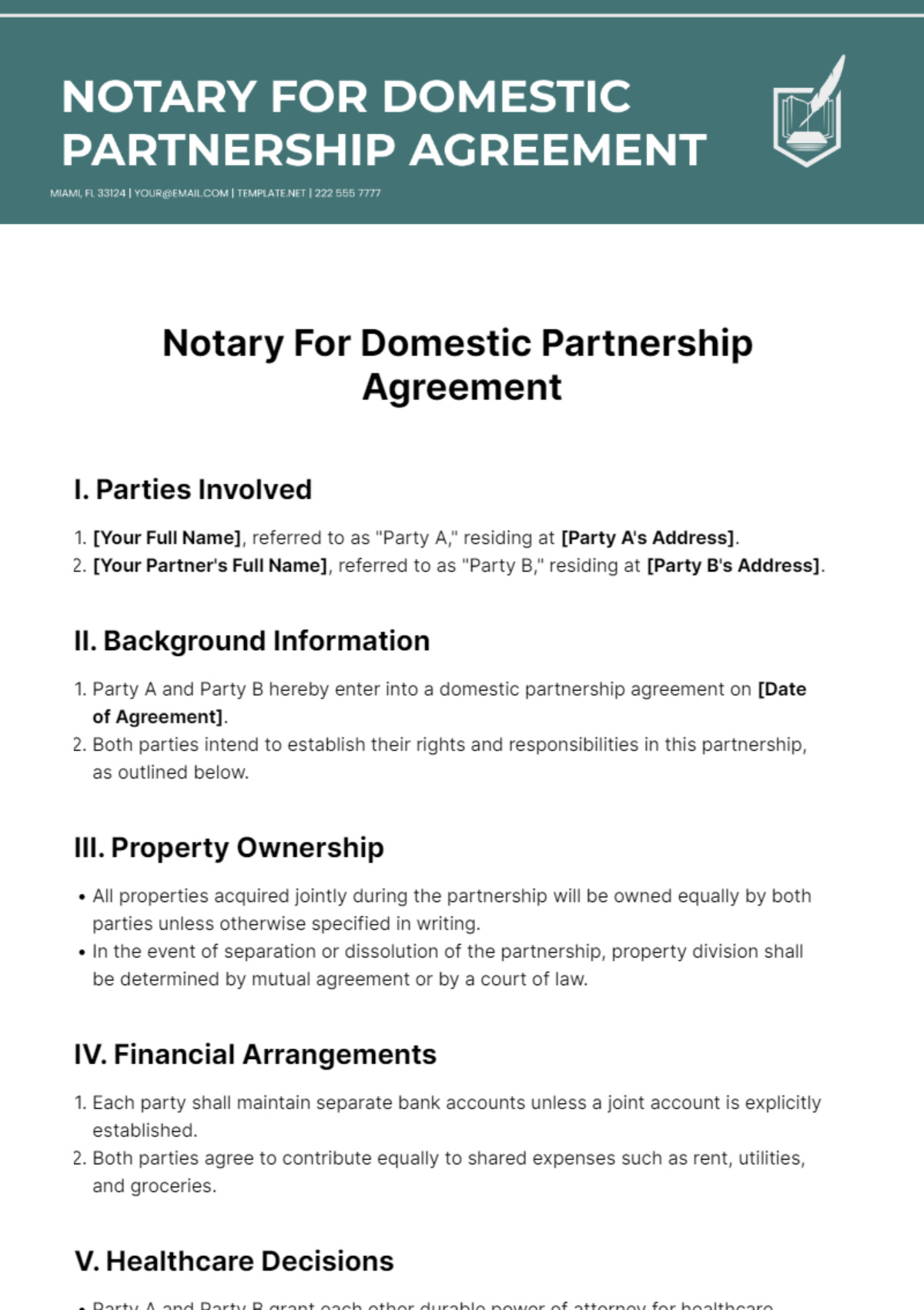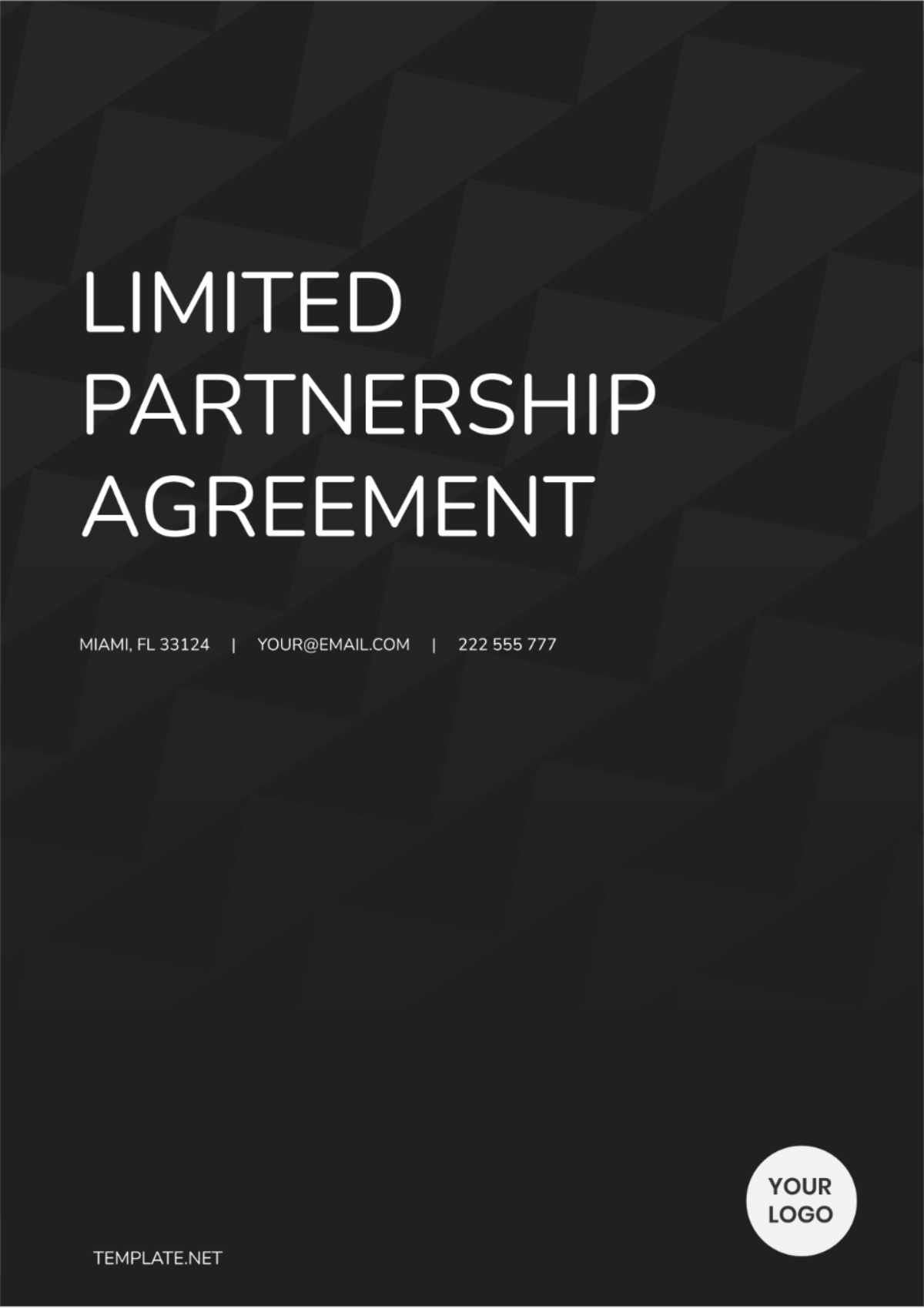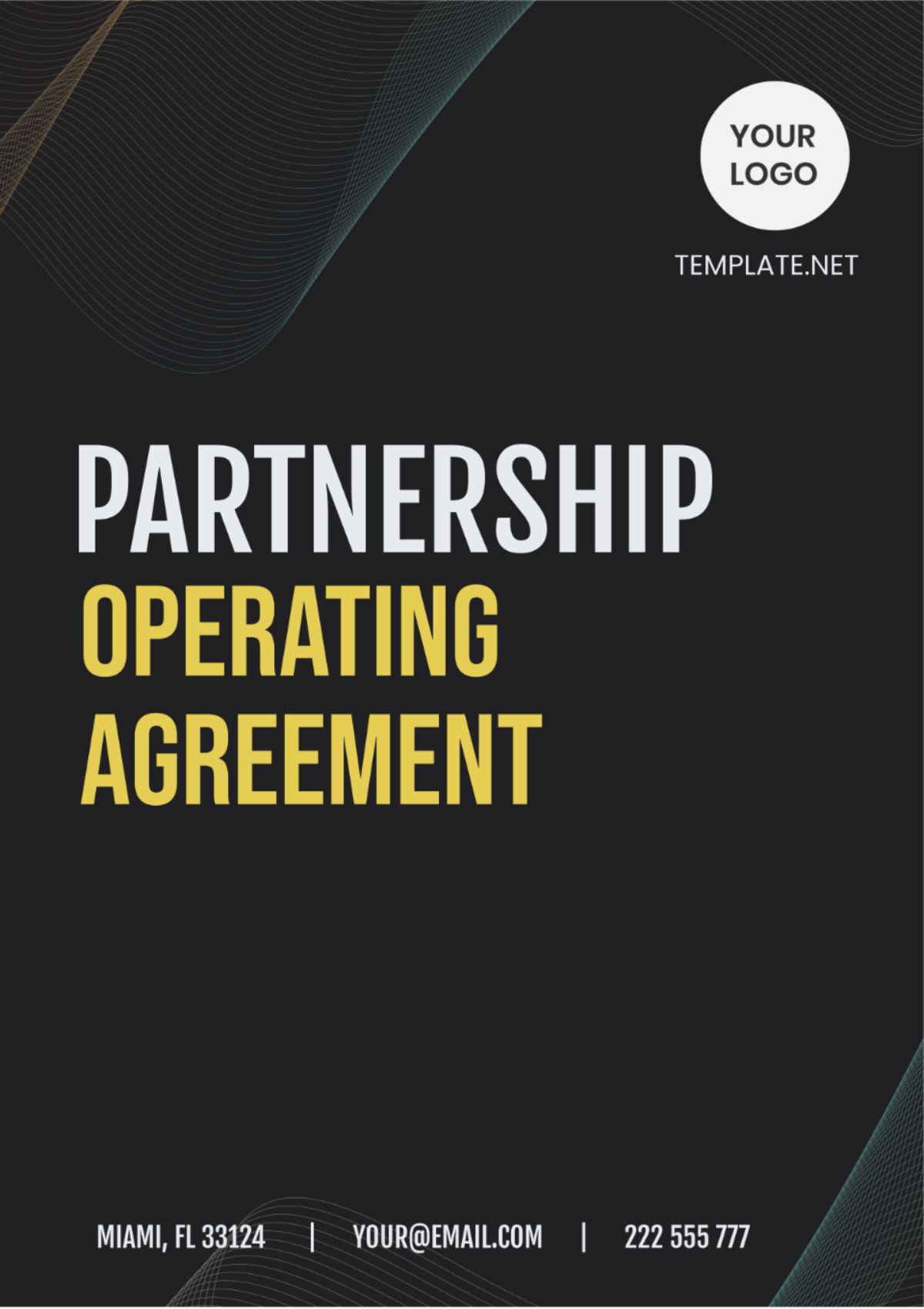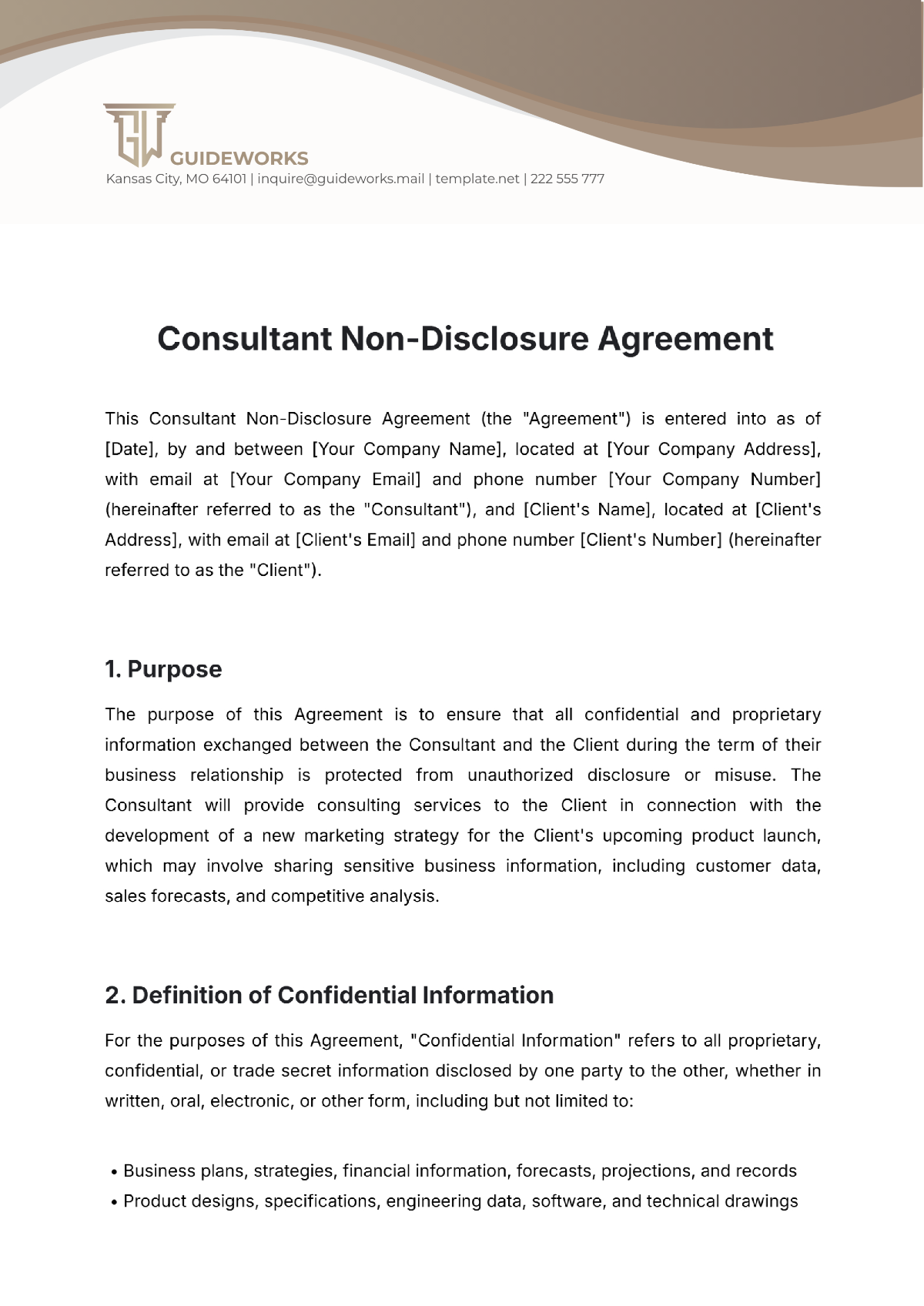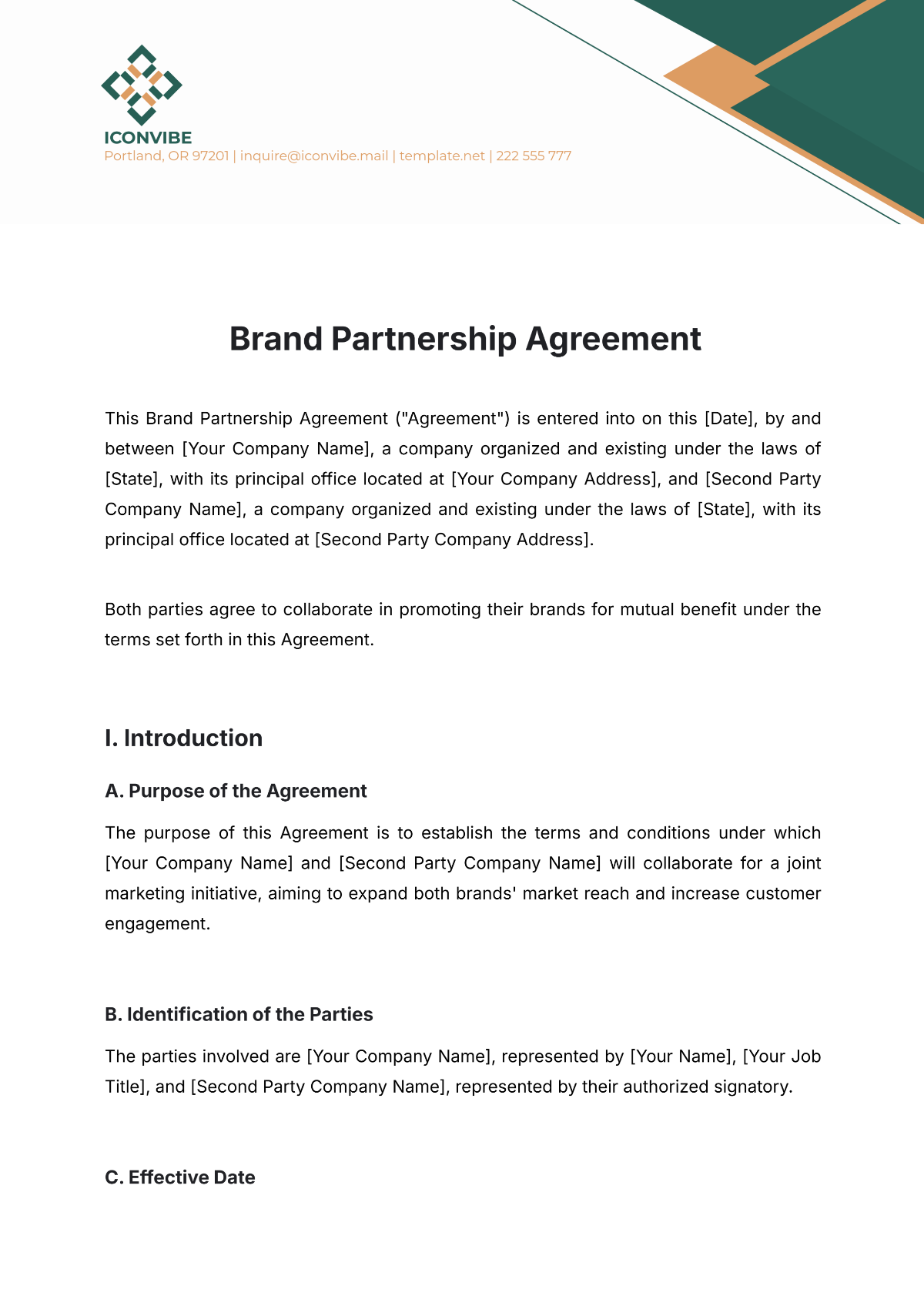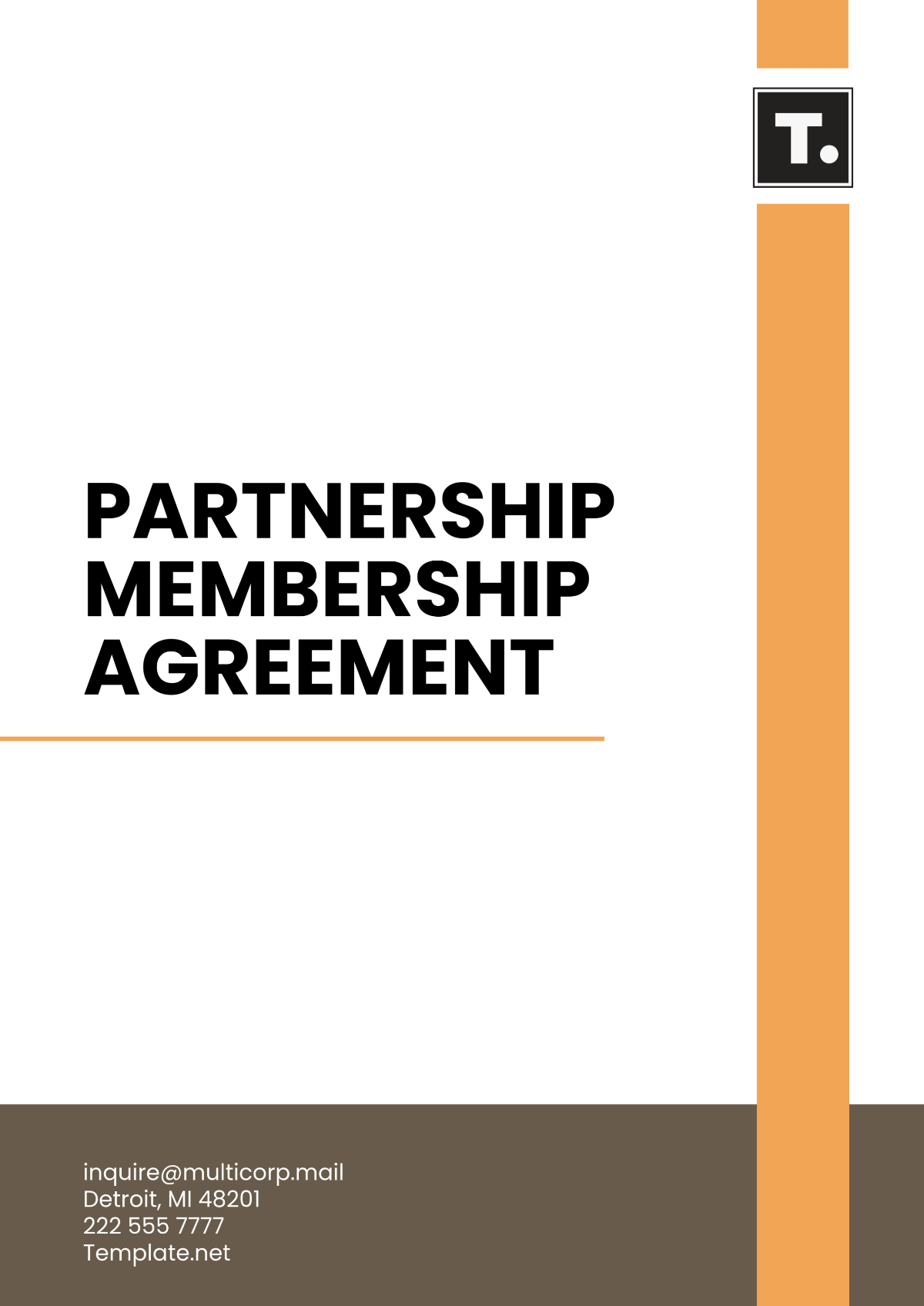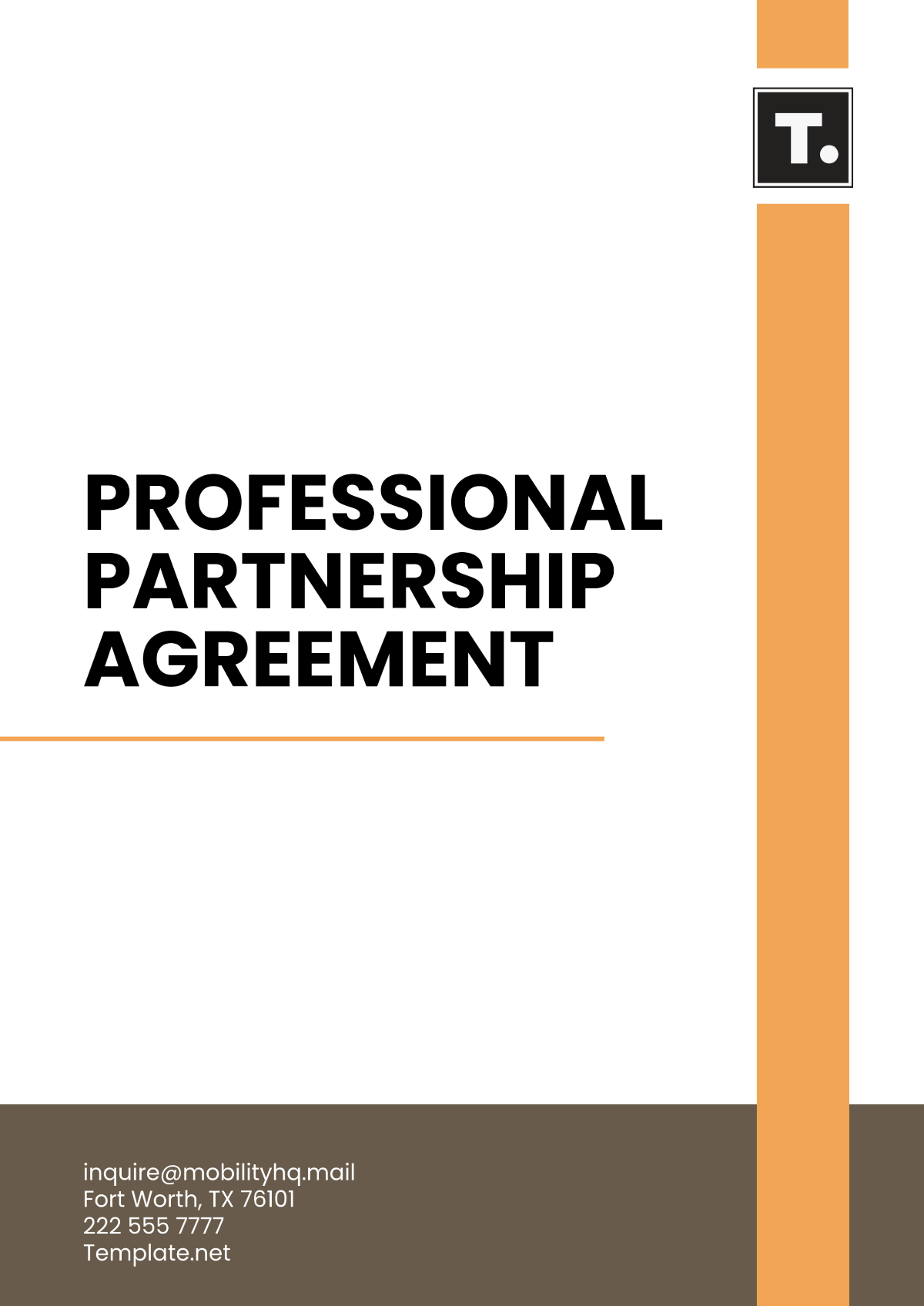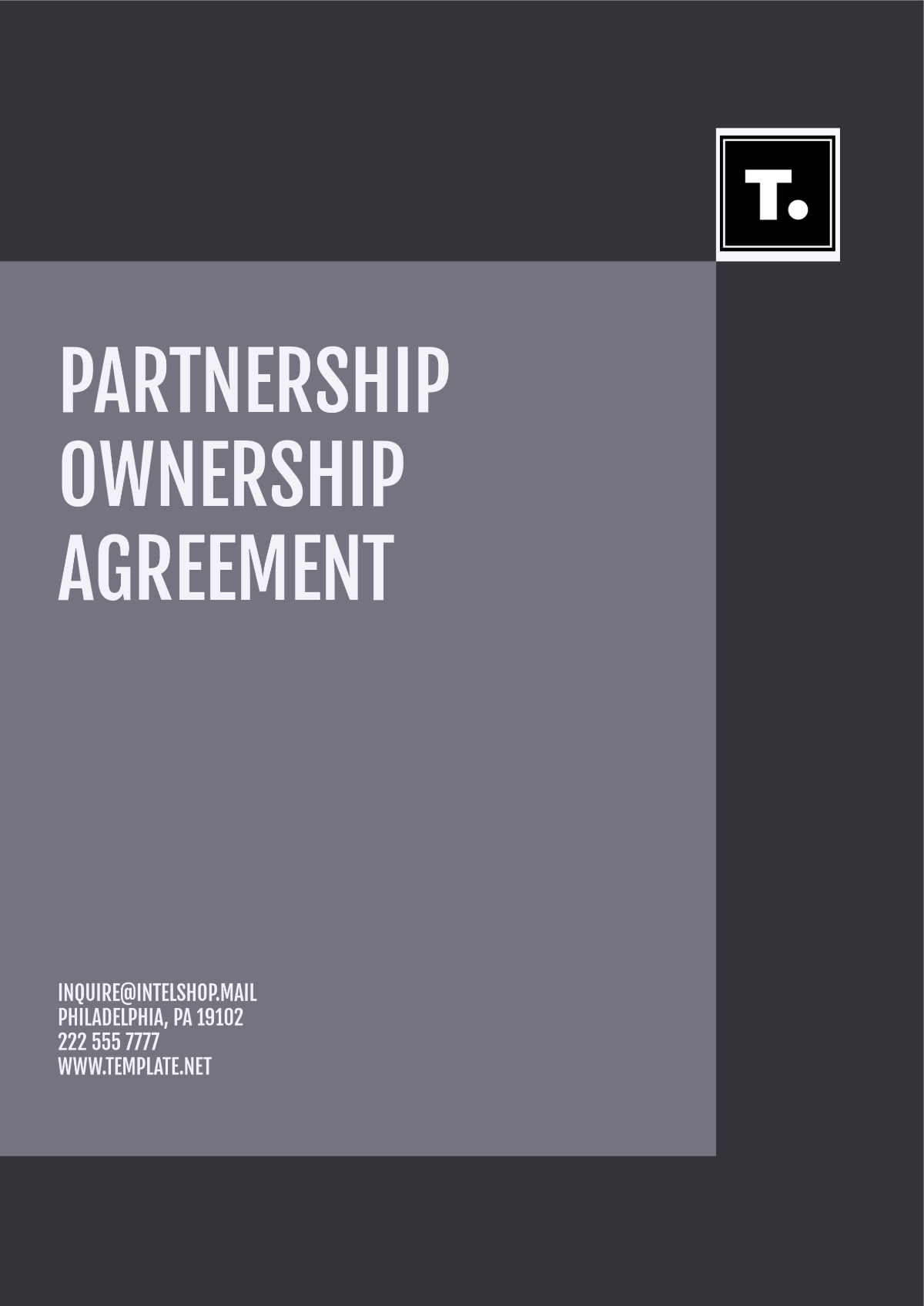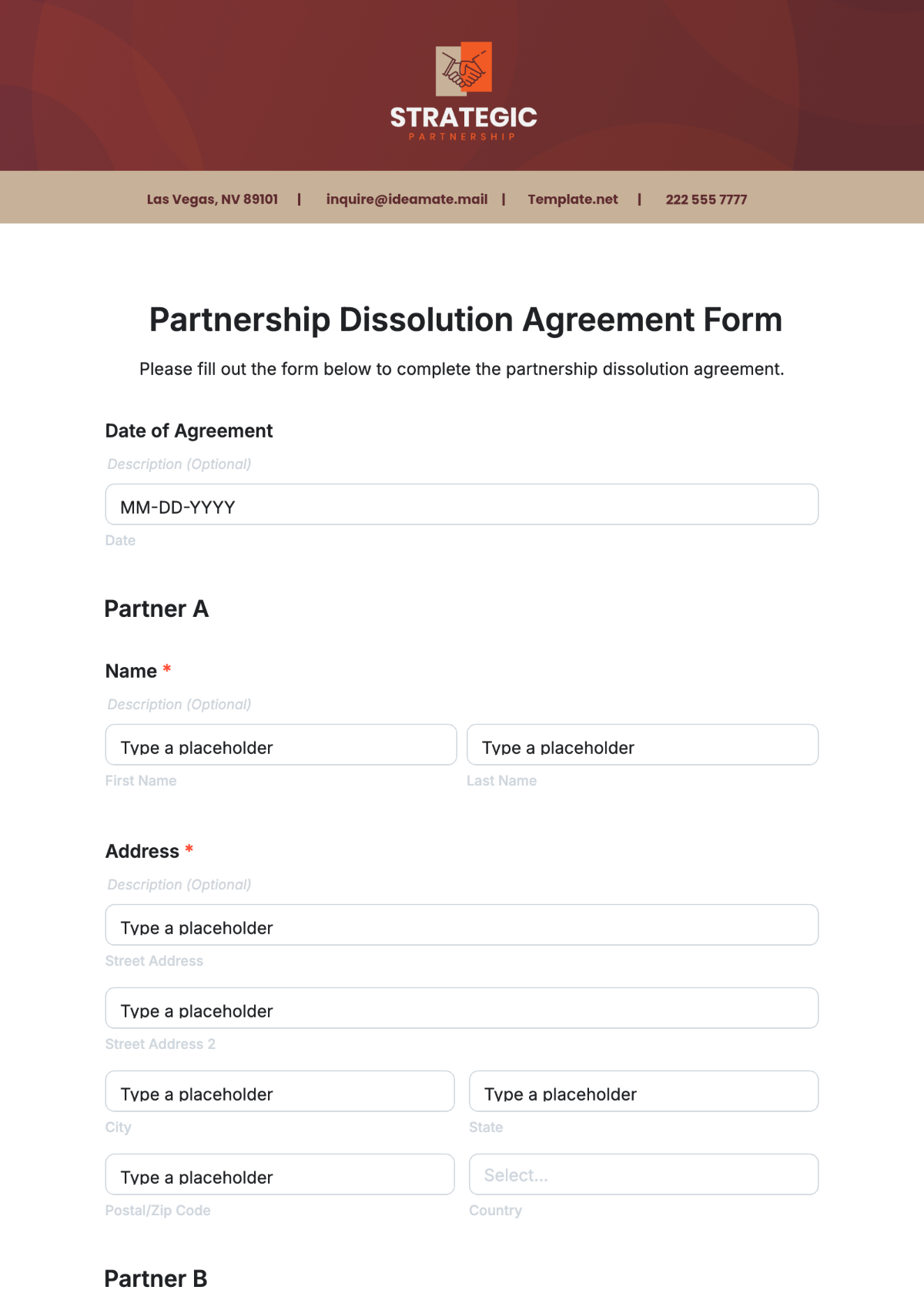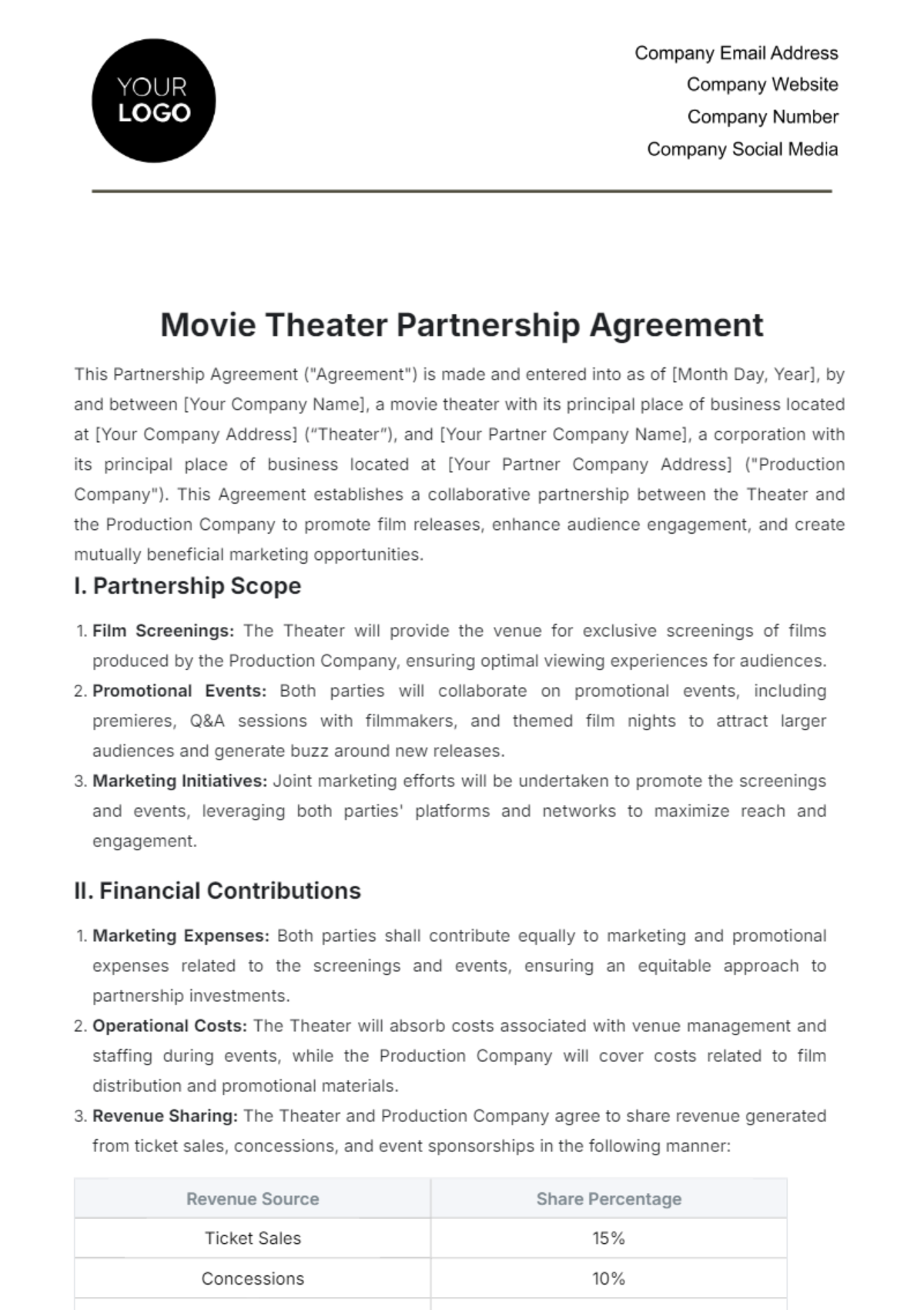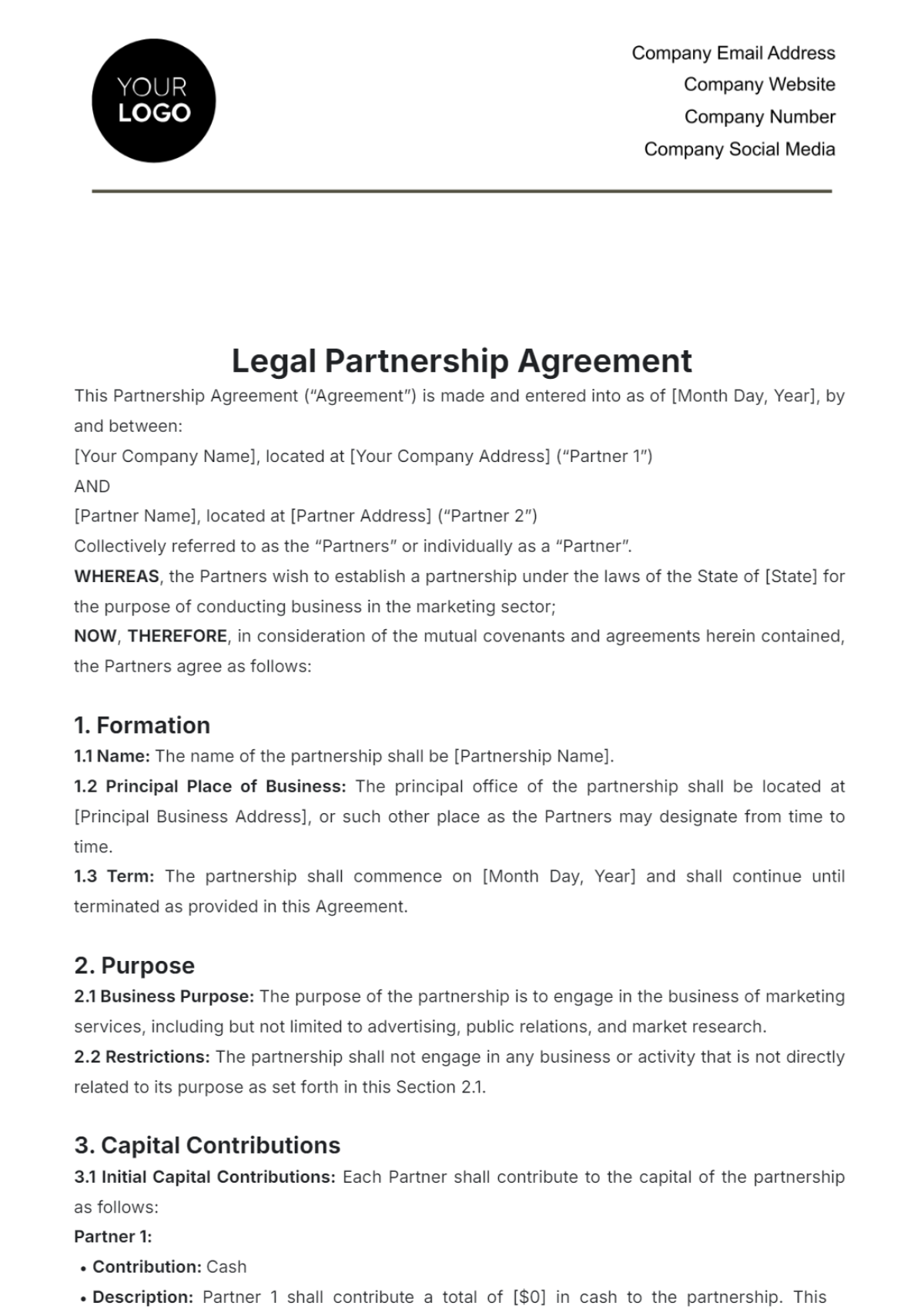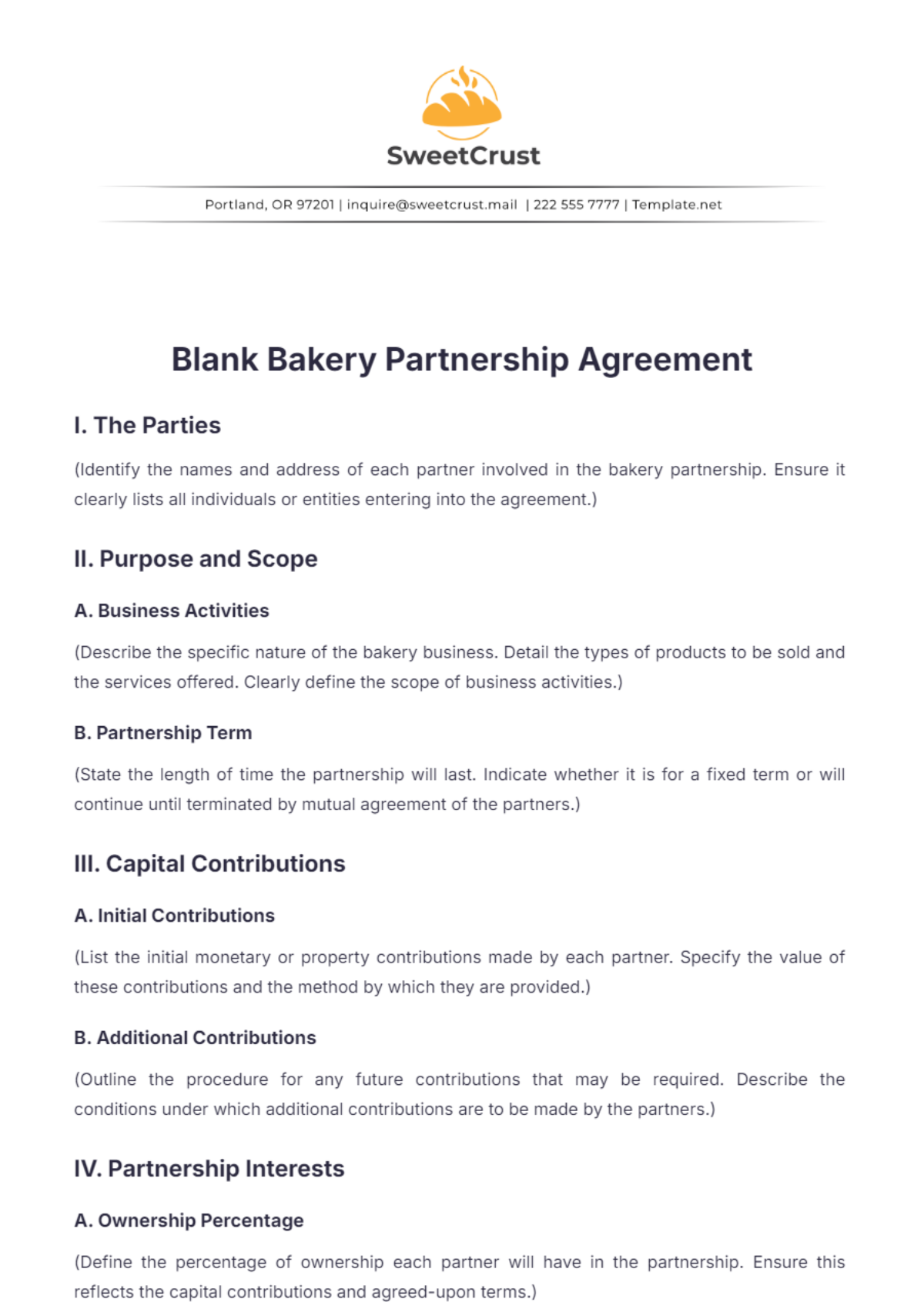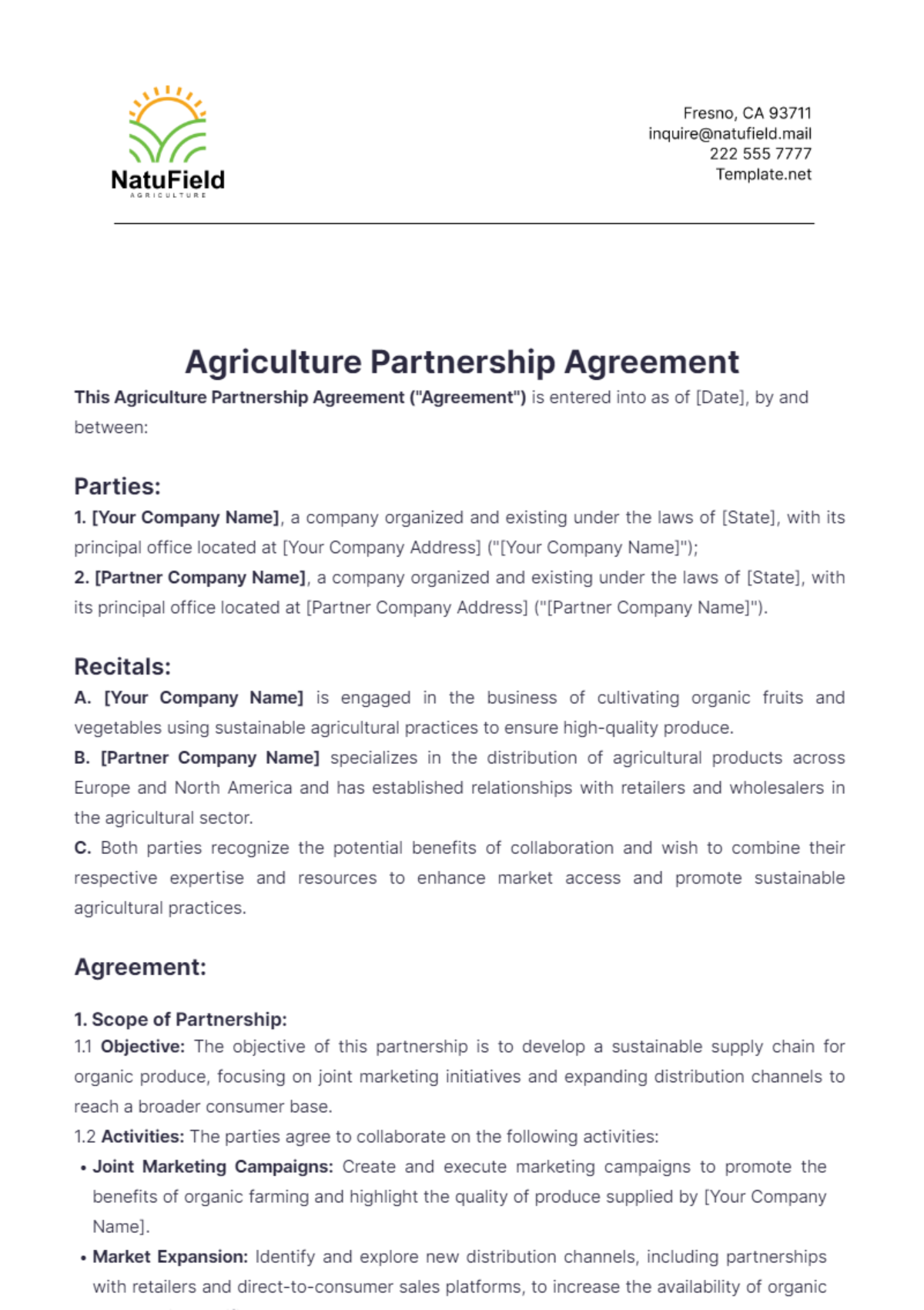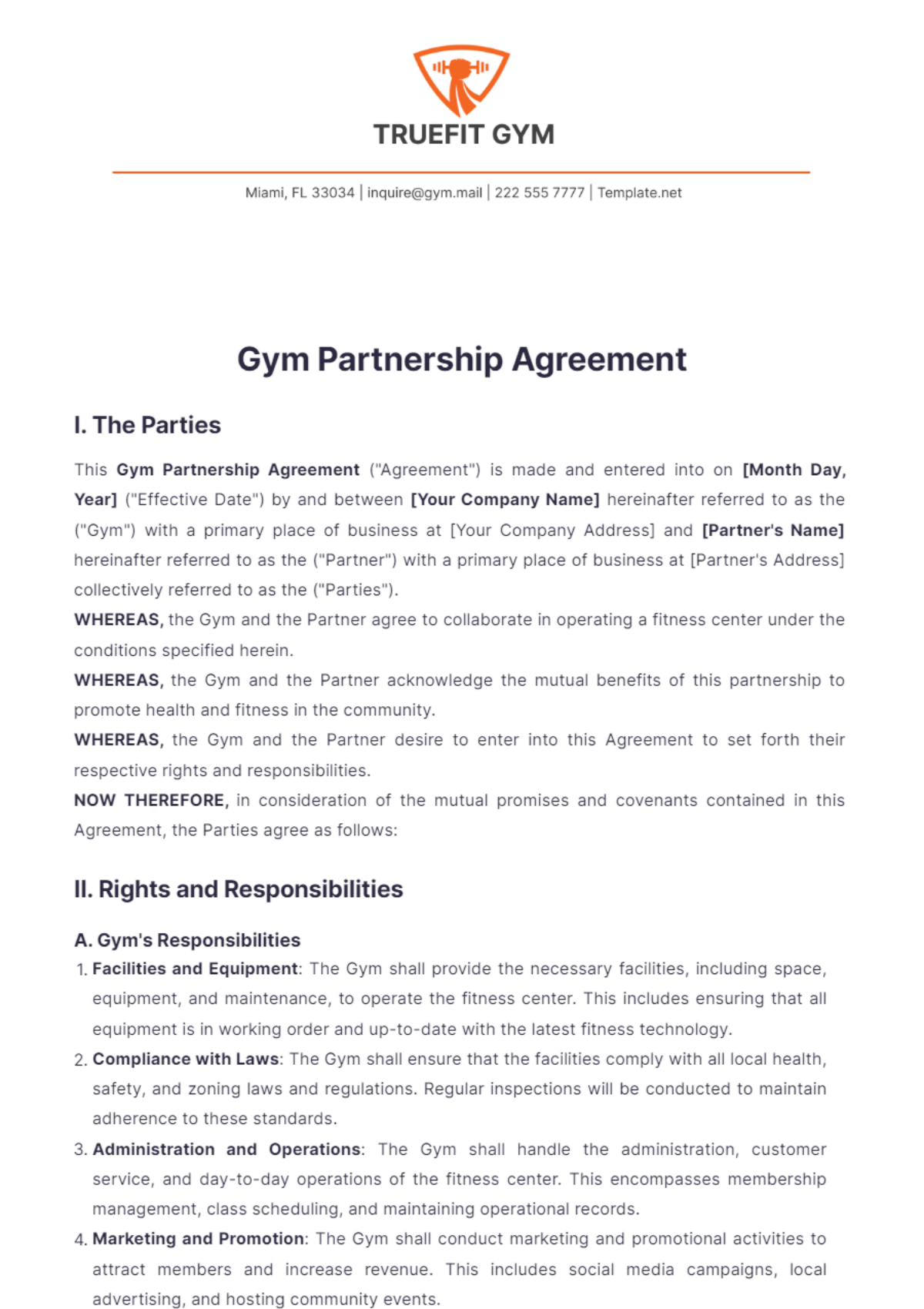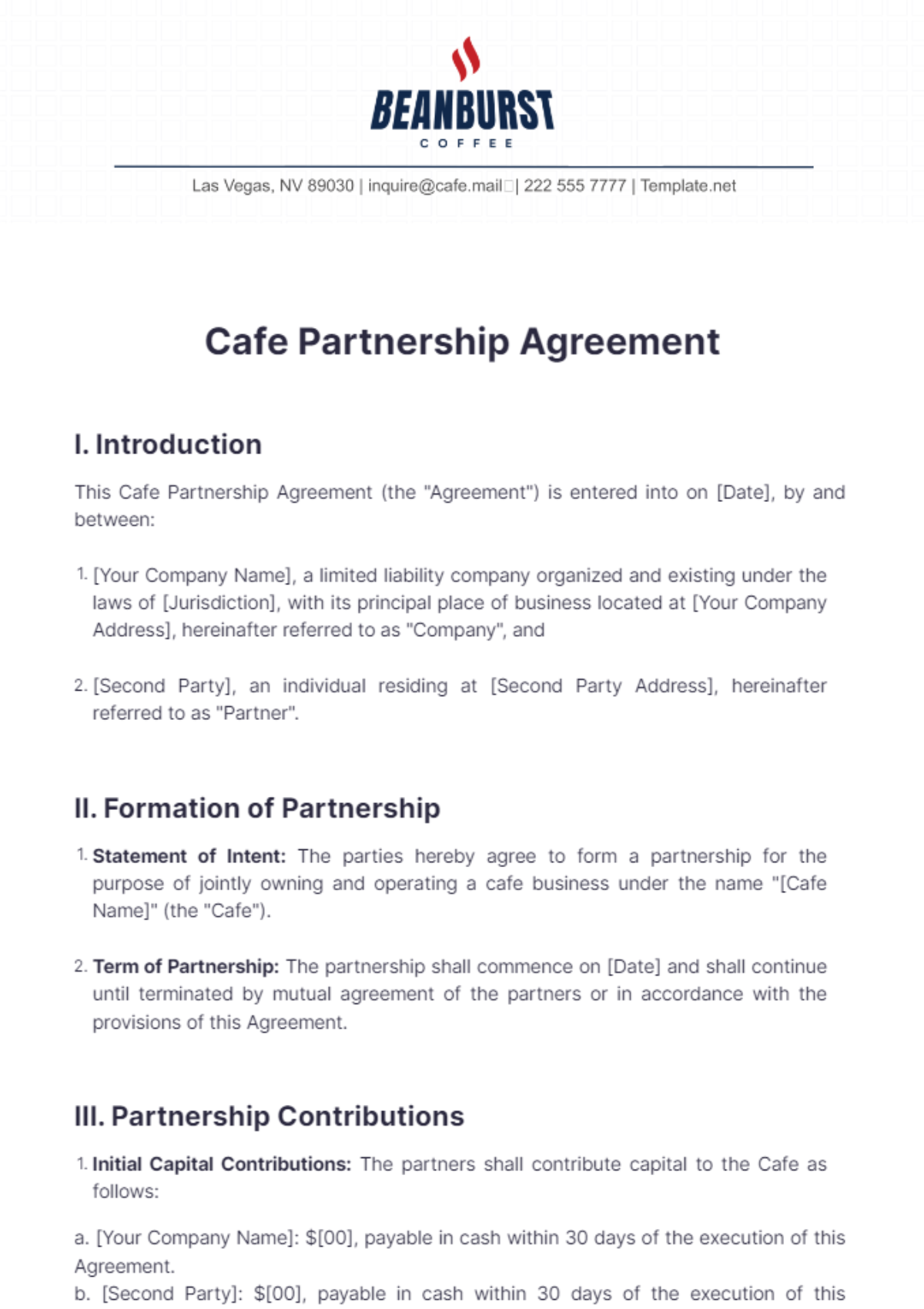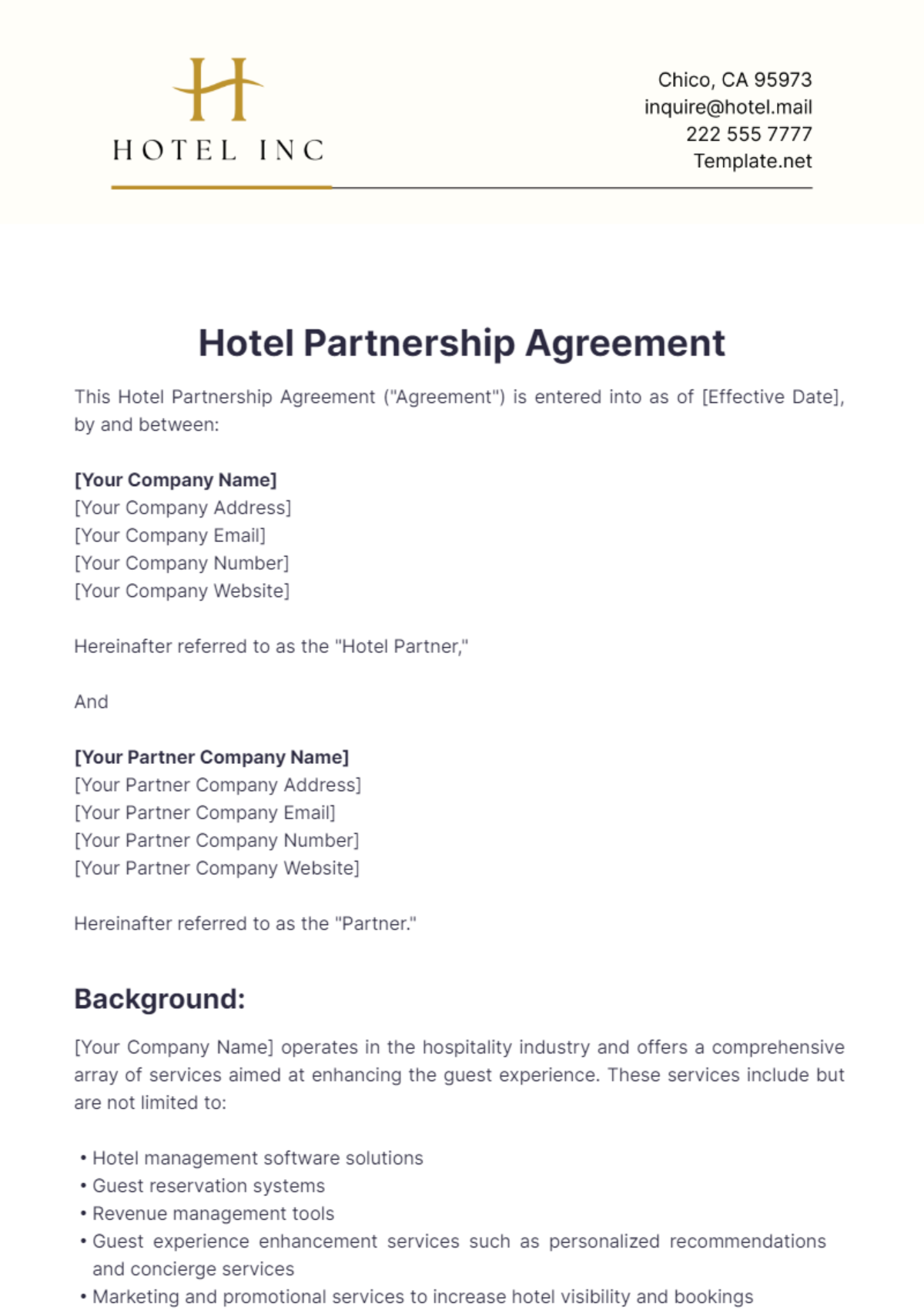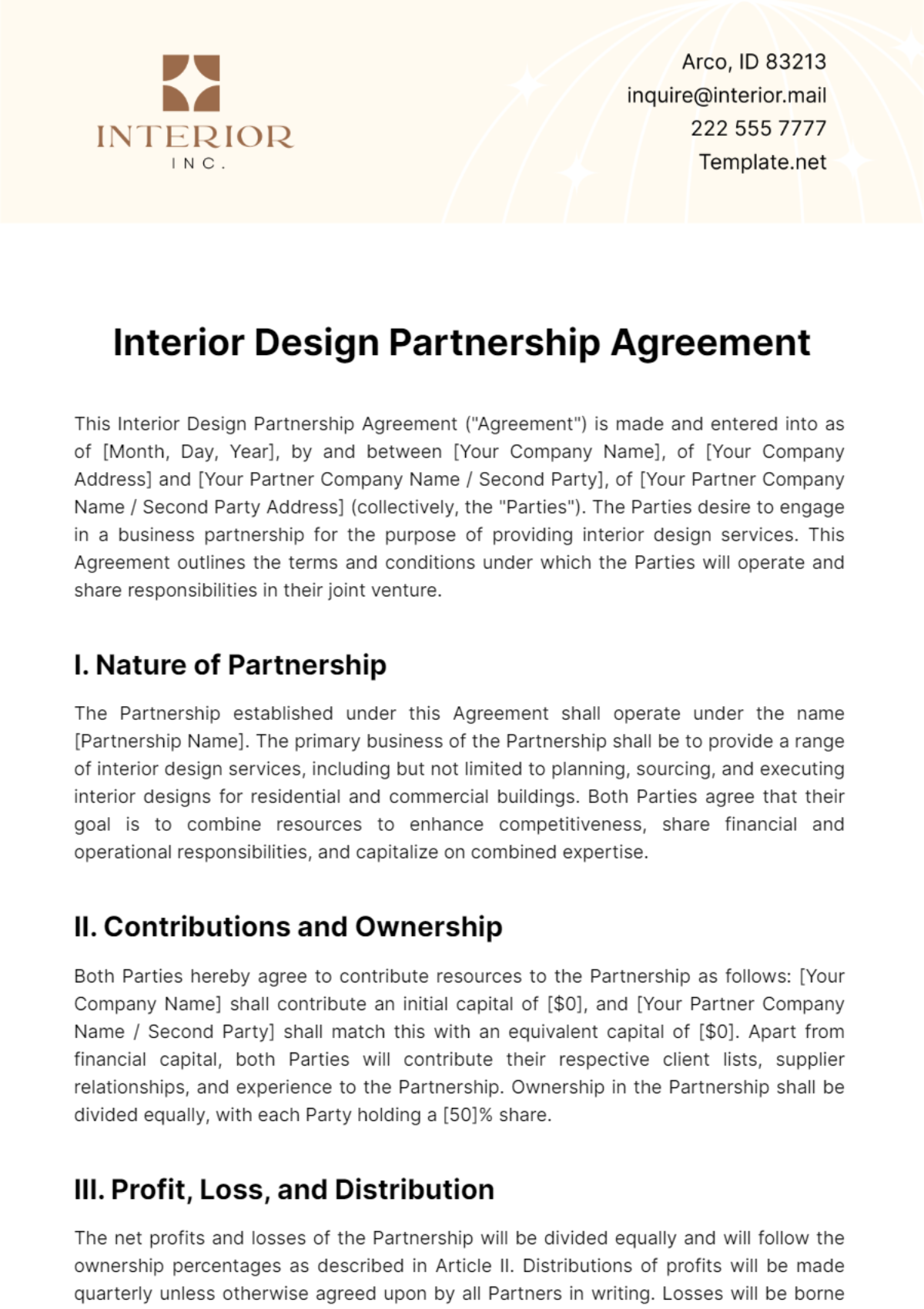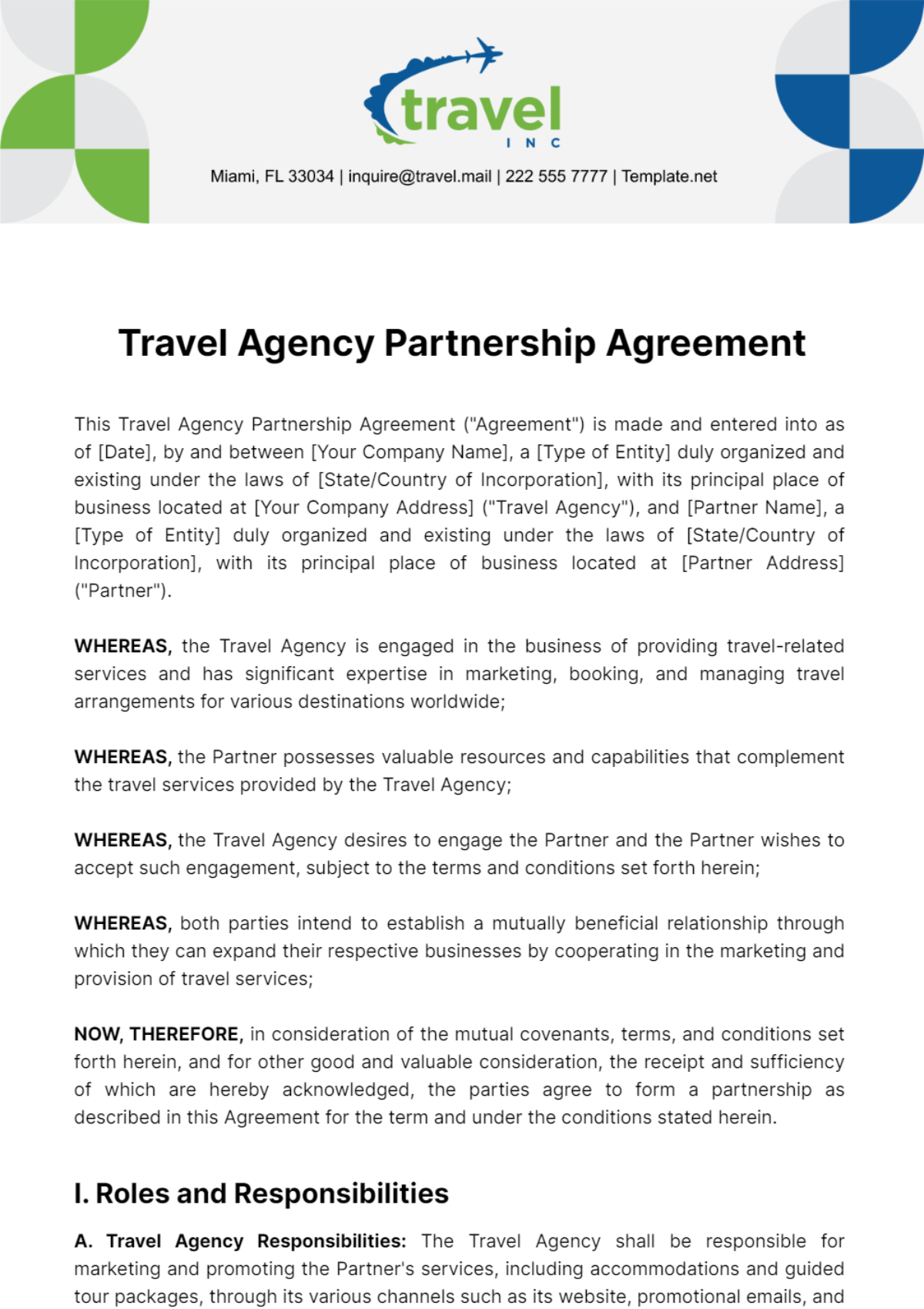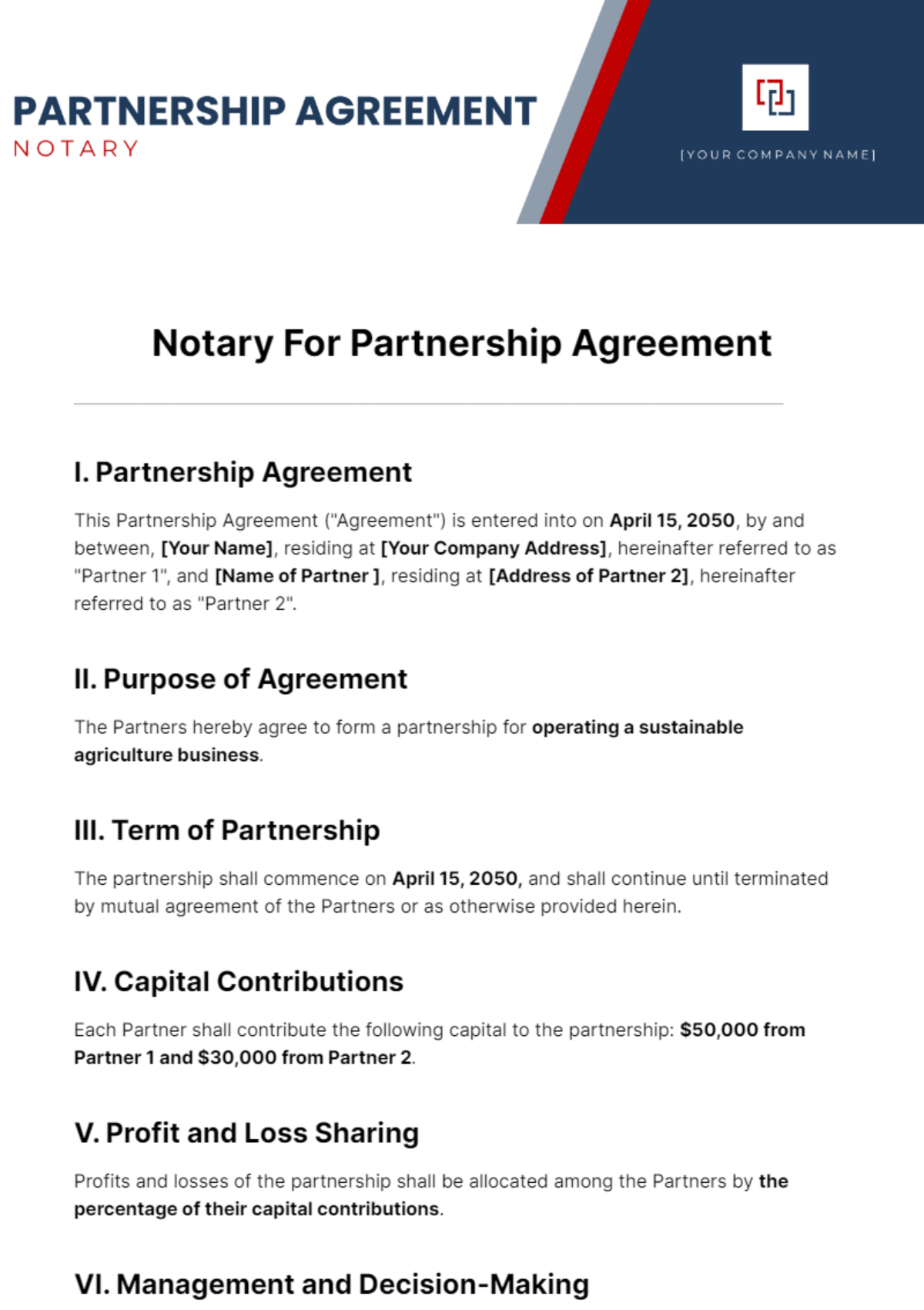Architecture Team Agreement
This Architecture Team Agreement ("Agreement") is made effective as of [Month Day, Year], by and among the core members of the architectural project team at [Your Company Name] (collectively referred to as "Parties").
1. Purpose and Objectives
The primary purpose of this Agreement is to delineate the roles, responsibilities, and expectations of all members within the architectural team at [Your Company Name]. This document is crafted to ensure that each team member is aware of their individual contributions to the collective goals of the firm, thereby fostering a cohesive and efficient working environment. By establishing clear protocols and guidelines, this Agreement is pivotal in promoting effective communication and collaboration, which are essential for the successful completion of architectural projects.
Furthermore, it sets forth the mechanisms for conflict resolution and decision-making processes, crucial for maintaining harmony and focus within the team. Through these established standards, the Agreement aims to enhance productivity and ensure the delivery of the highest quality of work in all architectural undertakings.
A. Define the overarching goals of the architectural team aligned with the firm’s strategic vision.
B. Outline the expected professional conduct and ethical standards for all team members.
C. Detail the scope of work and expected outcomes for each project phase.
D. Establish guidelines for maintaining documentation and records essential for project continuity and legal compliance.
E. Provide a framework for continuous improvement and professional development within the team.
2. Roles and Responsibilities
Each member of the architectural team commits to fulfilling their designated roles and responsibilities as outlined in this Agreement. This comprehensive structure ensures that every team member is accountable for contributing effectively to the project's success from inception through to completion. The roles encompass a wide range of functions that, when executed in harmony, drive the successful delivery of architectural services.
2.1 Define the specific duties of licensed architects, including design, supervision, and regulatory compliance.
2.2 Outline the responsibilities of project managers to oversee project timelines, budget compliance, and team coordination.
2.3 Detail the tasks assigned to design assistants, such as drafting, modeling, and research support.
2.4 Establish the role of client liaison officers in maintaining communication and fulfilling client requirements.
2.5 Assign quality assurance tasks to ensure all project deliverables meet the established standards.
2.6 Specify the responsibilities for administrative support, including procurement, scheduling, and document control.
2.7 Commit to regular participation in professional development sessions to enhance skills and knowledge.
2.8 Set expectations for team collaboration and support, promoting a supportive and inclusive work environment.
2.9 Outline the process for performance evaluations, providing feedback and opportunities for growth.
2.10 Detail the protocols for emergency response and unforeseen project adjustments.
3. Communication and Collaboration
Effective communication forms the bedrock of success for the architectural team. This Agreement emphasizes the necessity of maintaining open, honest, and effective communication channels among team members and with clients, ensuring that all stakeholders are aligned and informed throughout the project lifecycle.
3.1 Commit to the use of collaborative tools and platforms that facilitate real-time communication and seamless information sharing.
3.2 Implement regular team meetings to discuss project progress, challenges, and strategic planning.
3.3 Encourage the sharing of constructive feedback among team members to foster a culture of continuous improvement.
3.4 Establish a formal mechanism for addressing and resolving interpersonal conflicts and professional disagreements.
3.5 Define the protocols for client interactions, ensuring consistent, professional, and timely communications.
3.6 Detail the use of project management software and other technological tools to enhance collaboration.
3.7 Set regular intervals for strategy sessions to align team efforts with evolving project requirements.
3.8 Encourage cross-disciplinary collaboration with other departments within the firm to enhance project outcomes.
3.9 Outline the process for integrating client feedback into ongoing projects to ensure client satisfaction and project success.
3.10 Provide guidelines for documenting and reporting project status to stakeholders and upper management.
4. Decision-Making Processes
The decision-making processes outlined in this Agreement ensure that decisions affecting both the project and team dynamics are made thoughtfully and inclusively. The aim is to harness collective wisdom to guide project direction and maintain harmony within the team.
4.1 Establish a framework for collective decision-making, ensuring every team member has a voice in critical decisions.
4.2 Adopt a unanimous decision-making approach for pivotal issues that impact the project's scope, direction, timelines, or budget.
4.3 Implement a majority vote system for less critical decisions, allowing for efficient and timely resolution.
4.4 Require that all decisions, especially those affecting project milestones and team roles, be documented in writing to maintain a record.
4.5 Ensure decisions are communicated effectively to all relevant stakeholders to maintain transparency.
4.6 Detail the procedure for escalating unresolved decisions to higher management when a consensus cannot be reached.
4.7 Outline the responsibilities of each team member in upholding and implementing agreed-upon decisions.
4.8 Establish periodic reviews of decision-making effectiveness to adapt processes as necessary.
4.9 Set guidelines for emergency decision-making protocols under tight deadlines or critical situations.
4.10 Encourage feedback on decision-making processes as part of continuous improvement efforts within the team.
5. Conflict Resolution
Effective management of conflicts is crucial to maintaining a productive and harmonious work environment. This section provides the mechanisms for resolving disputes within the team in a professional and timely manner.
5.1 Commit to addressing conflicts directly and promptly to prevent escalation.
5.2 Facilitate initial private discussions between involved parties to seek resolution at the earliest stage.
5.3 Appoint a neutral mediator from within the team when initial attempts at resolution are unsuccessful.
5.4 Detail the escalation process to the team's supervisor or higher management if mediation does not resolve the conflict.
5.5 Establish guidelines for conducting conflict resolution sessions, ensuring fairness and confidentiality.
5.6 Encourage a culture of openness and respect, where team members feel safe to express concerns without fear of retribution.
5.7 Document the outcomes of all conflict resolutions to ensure accountability and learning.
5.8 Review conflict resolution procedures regularly to improve effectiveness.
5.9 Uphold the principle of amicable resolution with the aim to preserve professional relationships and project integrity.
5.10 Ensure that all team members are trained in conflict resolution techniques and understand the established protocols.
6. Confidentiality
Confidentiality is paramount to protect the integrity of our projects and the privacy of our clients. This section outlines the obligations of team members in handling sensitive information.
6.1 Emphasize the importance of maintaining strict confidentiality on all project details, client information, and proprietary processes.
6.2 Prohibit the sharing of sensitive information with third parties without obtaining prior explicit consent from authorized stakeholders.
6.3 Limit internal access to confidential information to individuals whose roles require it, ensuring minimal exposure.
6.4 Detail the disciplinary consequences of unauthorized disclosure, which may include termination of employment.
6.5 Extend the confidentiality obligations beyond the duration of the Agreement to protect residual proprietary information.
6.6 Provide guidelines for secure handling and storage of confidential materials to prevent accidental disclosure.
6.7 Establish protocols for reporting and addressing breaches of confidentiality.
6.8 Conduct regular training sessions to reinforce the importance of confidentiality and educate team members on best practices.
6.9 Review and update confidentiality protocols to address new security challenges or changes in legal requirements.
6.10 Include clauses that ensure the return or destruction of confidential materials upon the termination of a team member’s role or project completion.
7. Term and Termination
The duration and conditions for the termination of this Agreement are designed to protect the interests of all parties involved and ensure a clear conclusion to the collaboration.
7.1 State the effective date and the anticipated duration of the Agreement, typically aligned with the project lifecycle.
7.2 Allow any party to terminate the Agreement with or without cause, provided that thirty (30) days' written notice is given.
7.3 Require the returning of all confidential materials to their respective owners upon termination.
7.4 Clarify that termination does not affect any accrued rights or obligations of the parties as of the date of termination.
7.5 Detail the procedures for resolving disputes arising from or related to the termination of the Agreement.
7.6 Outline the responsibilities of all parties in concluding their involvement in the project in an orderly and professional manner.
7.7 Provide for a final review and closure meeting to ensure all outstanding matters are resolved and documented.
7.8 Establish guidelines for the transition or handover of responsibilities to ensure continuity of the project.
7.9 Include provisions for final payments or settlements to be made in accordance with the terms of the Agreement.
7.10 Specify the mechanism for formal notification of termination to all impacted parties.
8. Governing Law
This Agreement shall be governed by and construed in accordance with the laws of [State].
IN WITNESS WHEREOF, the Parties hereto have executed this Agreement as of the date first above written.

[Your Name]
[Your Job Title]
[Your Company Name]
Date: [Date]

[Name]
[Job Title]
[Your Company Name]
Date: [Date]

[Name]
[Job Title]
[Your Company Name]
Date: [Date]

